 No one expected much from "Jeepers Creepers" when it was released 15 years ago this week, on August 31, 2001. It was a low-budget horror film with no star power, being released at the bitter end of the summer dog days.
No one expected much from "Jeepers Creepers" when it was released 15 years ago this week, on August 31, 2001. It was a low-budget horror film with no star power, being released at the bitter end of the summer dog days.
Yet, it made a star out of Justin Long, made a success out of director Victor Salva, and, with its record-breaking box-office, made Labor Day weekend into a prime spot for launching horror movies. Most of all, it introduced the Creeper, a winged monster that feasts on human flesh, and the star villain of a franchise whose long-awaited third installment is finally due in 2017.
Even after two hit movies, the Creeper remains shrouded in mystery. But here are some of the startling facts behind the film that brought him to life. 1. Is the Creeper legend based on a true story? Salva has said it's a complete fiction, but the movie's first 20 minutes bear a striking resemblance to a 1991 episode of "Unsolved Mysteries," centering on the case of Dennis DePue, a Michigan man who allegedly killed his wife in 1990 and dumped her body behind an abandoned school.
1. Is the Creeper legend based on a true story? Salva has said it's a complete fiction, but the movie's first 20 minutes bear a striking resemblance to a 1991 episode of "Unsolved Mysteries," centering on the case of Dennis DePue, a Michigan man who allegedly killed his wife in 1990 and dumped her body behind an abandoned school.
The "Jeepers" opening and the eyewitness account of a couple cited on the show share such details as a traveling man and woman playing license-plate name games, their pursuit by a mysterious vehicle (a van, not a truck) on an otherwise deserted highway, a derelict building (a school, not a church), and bloody bed linens. Even individual shots from the film seem to resemble similar shots from the TV episode. Compare and decide for yourself.
2. Justin Long had impressed Salva with his performance in "Galaxy Quest," but what won him the lead role of Darry was his audition. Salva said it contained none of the false bravado and machismo the director had seen in other male actors who were teens or young adults. Salva knew Long could appear funny or genuinely frightened, depending on what the scene needed. 3. Both Long and Gina Philips, who plays Darry's sister, Trisha (above), have said that Salva's screenplay was so scary that they had to put it down after reading the first 20 pages or so and come back to it hours later.
3. Both Long and Gina Philips, who plays Darry's sister, Trisha (above), have said that Salva's screenplay was so scary that they had to put it down after reading the first 20 pages or so and come back to it hours later.
4. Long and Philips are supposed to be college students, but while Long was 22 at the time of filming, Philips was already 30.
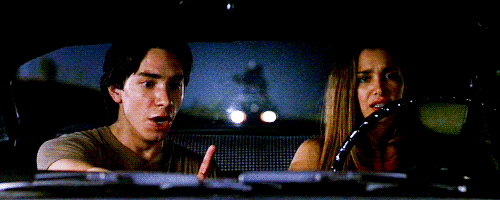 5. MGM wanted more bankable names to play the two leads, but Salva's longtime mentor and producer, Francis Ford Coppola, used his clout to stick up for Salva's casting choices.
5. MGM wanted more bankable names to play the two leads, but Salva's longtime mentor and producer, Francis Ford Coppola, used his clout to stick up for Salva's casting choices.
6. The Creeper's truck was every bit the jalopy it appears in the film. The exhaust system didn't work, and after every take, the driver had to open the door to let out a cloud of smoke.
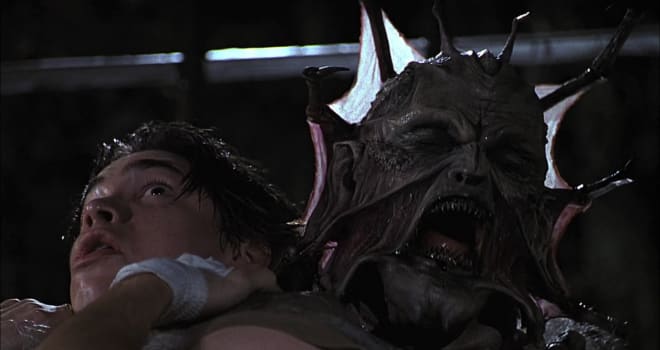 7. Jonathan Breck scared the filmmakers enough during his audition to win the part of the Creeper. He mimicked the moments where the Creeper gets in the faces of terrified potential victims and starts sniffing them to see if they have any body parts he wants to consume. You can watch part of his successful audition here.
7. Jonathan Breck scared the filmmakers enough during his audition to win the part of the Creeper. He mimicked the moments where the Creeper gets in the faces of terrified potential victims and starts sniffing them to see if they have any body parts he wants to consume. You can watch part of his successful audition here.
8. Salva likes to make Hitichcock-style cameos in his films. In the sequence where you see psychic Jizelle's record collection, there's a photo of a young man wearing a necktie; that's Salva's high school senior photo. You can also see Salva's head among the bodies of the victims in the Creeper's House of Pain. 9. The movie was shot in northern Florida, around Ocala. The highway where much of the film was shot didn't appear deserted enough, so Salva got local homeowners to uproot their mailboxes temporarily.
9. The movie was shot in northern Florida, around Ocala. The highway where much of the film was shot didn't appear deserted enough, so Salva got local homeowners to uproot their mailboxes temporarily.
10. The church above the Creeper's lair was a real abandoned church that, after the movie's success, became a tourist attraction until, in a life-imitates-art moment, it mysteriously burned down a few years ago. 11. To Salva, Florida seemed like the jungle. The director, who weighed 400 pounds at the time, found the heat and humidity unbearably oppressive, though he noted that Breck had it worse, having to endure the weather from under mounds of latex. There were so many noisy insects that during outdoor shots, a crew member had to fire a pistol before cameras rolled in order to silence the bugs long enough to capture a take with audible dialogue.
11. To Salva, Florida seemed like the jungle. The director, who weighed 400 pounds at the time, found the heat and humidity unbearably oppressive, though he noted that Breck had it worse, having to endure the weather from under mounds of latex. There were so many noisy insects that during outdoor shots, a crew member had to fire a pistol before cameras rolled in order to silence the bugs long enough to capture a take with audible dialogue.
12. When you hear the Creeper whistling the Johnny Mercer standard that gives the movie its title, the whistling voice actually belongs to the movie's editor, Ed Marx. His rendition of the tune was just supposed to be a place filler until Salva could find someone whose whistling he liked better, but he never did. 13. The roadside diner was a set built for the film, but it looked real enough that passers by would try to stop and get food and gas.
13. The roadside diner was a set built for the film, but it looked real enough that passers by would try to stop and get food and gas.
14. The house where the cat lady (Eileen Brennan) lived was the home of an actual cat lady, though the film's felines were provided by an animal trainer. Initially, Salva had planned for a more extensive sequence inside the house, but budget cuts forced him to trim the scene.  15. Once Salva arrived in Florida, he discovered that $1 million worth of his financing had fallen through, and he was forced to cut some 20 pages of script from the end of the film. There would have been a fiery climax where Darry manages to get behind the wheel of the Creeper's truck and drives it into an oncoming train in a suicidal attempt to destroy the creature.
15. Once Salva arrived in Florida, he discovered that $1 million worth of his financing had fallen through, and he was forced to cut some 20 pages of script from the end of the film. There would have been a fiery climax where Darry manages to get behind the wheel of the Creeper's truck and drives it into an oncoming train in a suicidal attempt to destroy the creature.
16. After budget cuts, Salva was left with $10 million to make his movie. When it premiered, it grossed $15.8 million, a record for a four-day Labor Day weekend. Ultimately, "Jeepers Creepers" earned $37.9 million in North America and a total of $59.2 million worldwide. 17. While Long had a cameo in 2003's "Jeepers Creepers 2," Philips chose not to return after Salva minimized Trisha's role in the script. The sequel broke the Labor Day record set by the first film, with an $18.4 million debut. It made a total of $63.1 million worldwide.
17. While Long had a cameo in 2003's "Jeepers Creepers 2," Philips chose not to return after Salva minimized Trisha's role in the script. The sequel broke the Labor Day record set by the first film, with an $18.4 million debut. It made a total of $63.1 million worldwide.
18. As early as 2009, Salva was floating the idea for a third "Jeepers," one that would bring Philips' Trisha back in the lead.
She was to have grown into a successful businesswoman who marshals her financial resources to combat the Creeper and stop him from targeting her now-teenage son. "Jeepers Creepers 3: Cathedral" finally went before the cameras this spring, though reportedly with a much-revised screenplay and a smaller role for Philips. It's due in theaters next year.
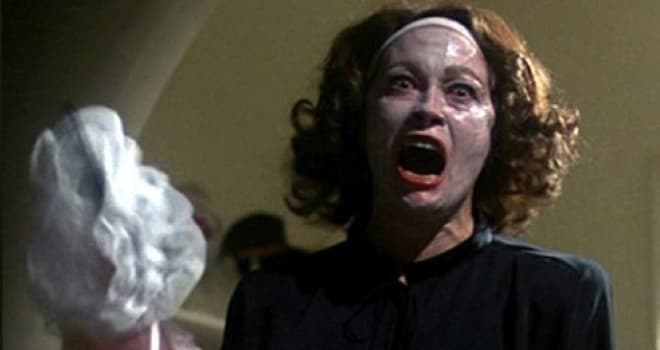 Before she died in 1977,
Before she died in 1977,  1.
1.  4.
4.  10. The kitchen set, where Christina's soap opera "The Secret Storm" is filmed, may look familiar to some viewers. It's the same set on the Paramount lot used for the kitchen of the Cunninghams' house throughout the run of "
10. The kitchen set, where Christina's soap opera "The Secret Storm" is filmed, may look familiar to some viewers. It's the same set on the Paramount lot used for the kitchen of the Cunninghams' house throughout the run of " 13. An Oscar winner for 1976's "
13. An Oscar winner for 1976's " 16. Christopher Crawford, depicted in the movie as having been strapped into his bed by his mother -- the film doesn't explain that this was Joan's attempt to curb his sleepwalking -- seems to be the only one of Joan's four children who felt "Mommie Dearest" accurately portrayed his childhood. As he said of the movie upon its release, "I lived it."
16. Christopher Crawford, depicted in the movie as having been strapped into his bed by his mother -- the film doesn't explain that this was Joan's attempt to curb his sleepwalking -- seems to be the only one of Joan's four children who felt "Mommie Dearest" accurately portrayed his childhood. As he said of the movie upon its release, "I lived it."
 25 years ago,
25 years ago,  1. It was the first film by Gilliam (left), who co-directed "
1. It was the first film by Gilliam (left), who co-directed " 3. As Gilliam said in a
3. As Gilliam said in a  5. Gilliam told American Masters in 2011 that he and Williams were the "hot air that flies off into the stratosphere" and that Bridges was "the guy who anchored the movie." Added Williams, "Even playing an out-there drunk, he's still the voice of sanity. Especially with me being the voice of insanity."
5. Gilliam told American Masters in 2011 that he and Williams were the "hot air that flies off into the stratosphere" and that Bridges was "the guy who anchored the movie." Added Williams, "Even playing an out-there drunk, he's still the voice of sanity. Especially with me being the voice of insanity." 7. Producer
7. Producer  9. In college, Mercedes Ruehl wrote a thesis about T.S. Eliot's poem "The Wasteland", which features the Fisher King, so she had had a good feeling when she saw the script for the "The Fisher King."
9. In college, Mercedes Ruehl wrote a thesis about T.S. Eliot's poem "The Wasteland", which features the Fisher King, so she had had a good feeling when she saw the script for the "The Fisher King." 12. You might have missed singer Tom Waits (above) as the beggar in the wheelchair at the train station.
12. You might have missed singer Tom Waits (above) as the beggar in the wheelchair at the train station. 14. The day after Williams's death, Jeff Bridges was doing a press conference in New York for his film "The Giver." He opened by
14. The day after Williams's death, Jeff Bridges was doing a press conference in New York for his film "The Giver." He opened by  For better or worse, when many Americans think of Australia, they think of
For better or worse, when many Americans think of Australia, they think of  1. Hogan came late to show business. He was a 32-year-old rigger and painter on the Sydney Harbor Bridge when his mates dared him to try out for an Australian TV talent show. He won and was soon writing and starring in his own sketch comedy show.
1. Hogan came late to show business. He was a 32-year-old rigger and painter on the Sydney Harbor Bridge when his mates dared him to try out for an Australian TV talent show. He won and was soon writing and starring in his own sketch comedy show. 5.
5.  6. The wilderness section of the movie was shot in Kakadu, a national park roughly the size of Germany. The only crocodile Hogan and Kozlowski ever tangled with was the mechanical croc built for the film (above). Nonetheless, the animatronic prop was realistic-looking enough that someone reported the crew to the authorities as suspected poachers.
6. The wilderness section of the movie was shot in Kakadu, a national park roughly the size of Germany. The only crocodile Hogan and Kozlowski ever tangled with was the mechanical croc built for the film (above). Nonetheless, the animatronic prop was realistic-looking enough that someone reported the crew to the authorities as suspected poachers. 9. In America, distributor Paramount advertised the film as "'Crocodile' Dundee," with extra quotation marks to make clear that it was a movie about a man nicknamed "Crocodile," not a movie about a crocodile named Dundee.
9. In America, distributor Paramount advertised the film as "'Crocodile' Dundee," with extra quotation marks to make clear that it was a movie about a man nicknamed "Crocodile," not a movie about a crocodile named Dundee. 11. Hogan,
11. Hogan,  13. Hogan and Kozlowski fell in love for real on the set. She continued to play love interest Sue in sequels "
13. Hogan and Kozlowski fell in love for real on the set. She continued to play love interest Sue in sequels " 15. Now 76, Hogan is the subject of a forthcoming small-screen bio, an Australian mini-series starring
15. Now 76, Hogan is the subject of a forthcoming small-screen bio, an Australian mini-series starring  It's been 15 years since the release of "
It's been 15 years since the release of " 1. The character of Derek Zoolander originated in 1996, when Stiller's friend
1. The character of Derek Zoolander originated in 1996, when Stiller's friend  2. Stiller named "Zoolander" villain Mugatu after a white-haired, ape-like monster from the original "
2. Stiller named "Zoolander" villain Mugatu after a white-haired, ape-like monster from the original " 3. Ferrell won the antagonist role when frequent Stiller collaborator
3. Ferrell won the antagonist role when frequent Stiller collaborator  The Swedish actor was visiting his dad, actor
The Swedish actor was visiting his dad, actor  7.
7.  9. Stiller had a Zoolander moment for real during the scene where
9. Stiller had a Zoolander moment for real during the scene where  10. In one scene, Wilson's Hansel wears a jumpsuit with a name tag that reads, "Kumar." This is supposedly an homage to actor
10. In one scene, Wilson's Hansel wears a jumpsuit with a name tag that reads, "Kumar." This is supposedly an homage to actor  12. "Zoolander" cost a reported $28 million to make and earned back $45 million in North America and another $16 million abroad.
12. "Zoolander" cost a reported $28 million to make and earned back $45 million in North America and another $16 million abroad. 13. The unflattering references to Malaysia got "Zoolander" banned in that country. Elsewhere in Asia, the references were changed to "Micronesia."
13. The unflattering references to Malaysia got "Zoolander" banned in that country. Elsewhere in Asia, the references were changed to "Micronesia." 14. A surprise "Zoolander" fan is artsy director
14. A surprise "Zoolander" fan is artsy director  15. It took a while for "Zoolander" to be appreciated as a cult hit, thanks to cable and home video. Stiller has said that's why it took so long to get a sequel greenlit.
15. It took a while for "Zoolander" to be appreciated as a cult hit, thanks to cable and home video. Stiller has said that's why it took so long to get a sequel greenlit. With
With  1. The primary inspiration for "Training Day" was the Los Angeles Police Department's Rampart corruption scandal of the 1990s. In fact, Washington chose to wear a goatee in order to resemble Rafael Pérez, an officer central to the scandal.
1. The primary inspiration for "Training Day" was the Los Angeles Police Department's Rampart corruption scandal of the 1990s. In fact, Washington chose to wear a goatee in order to resemble Rafael Pérez, an officer central to the scandal. 3. Fuqua (far right) was raised in a tough Pittsburgh neighborhood. Of power-abusing policemen like Alonzo, Fuqua said in 2014, "I grew up with that. I've seen that. I know that guy. That guy choked me out before. I was just a kid who was playing basketball and walking home with my friends."
3. Fuqua (far right) was raised in a tough Pittsburgh neighborhood. Of power-abusing policemen like Alonzo, Fuqua said in 2014, "I grew up with that. I've seen that. I know that guy. That guy choked me out before. I was just a kid who was playing basketball and walking home with my friends." 5. For research, the two stars met with several undercover cops, gang leaders, and drug dealers. Hawke even went out on patrol. "I did a bunch of these drive-arounds to figure this whole thing out," he recalled.
5. For research, the two stars met with several undercover cops, gang leaders, and drug dealers. Hawke even went out on patrol. "I did a bunch of these drive-arounds to figure this whole thing out," he recalled. 7. Fuqua also put members of both the Crips and the Bloods in the movie as extras. Fuqua came to the project with a street credibility that uniquely prepared him for what was to come. "Antoine Fuqua might be the only director around who can move through Hollywood and the gritty streets of Watts or Rampart or Crenshaw with equal agility," producer
7. Fuqua also put members of both the Crips and the Bloods in the movie as extras. Fuqua came to the project with a street credibility that uniquely prepared him for what was to come. "Antoine Fuqua might be the only director around who can move through Hollywood and the gritty streets of Watts or Rampart or Crenshaw with equal agility," producer  9. Mendes had played tiny roles in half a dozen movies, but playing Sara, Alonzo's baby mama, turned out to be her big break. She was 27 when she played the love interest opposite 47-year-old Washington. They would work together again a couple years later in "
9. Mendes had played tiny roles in half a dozen movies, but playing Sara, Alonzo's baby mama, turned out to be her big break. She was 27 when she played the love interest opposite 47-year-old Washington. They would work together again a couple years later in " 10. Washington has said he ad libbed the famous "King Kong" line.
10. Washington has said he ad libbed the famous "King Kong" line. 13. Similarly, Fuqua claimed he predicted Hawke's nomination for Best Supporting Actor during production, while filming one of Alonzo and Jake's intense conversations in Alonzo's car. The director recalled telling Hawke, "You get this right, Ethan, and you're gonna get nominated for an Oscar."
13. Similarly, Fuqua claimed he predicted Hawke's nomination for Best Supporting Actor during production, while filming one of Alonzo and Jake's intense conversations in Alonzo's car. The director recalled telling Hawke, "You get this right, Ethan, and you're gonna get nominated for an Oscar." 15. A decade after the film's release, there were rumors that Warner Bros. was developing a direct-to-video sequel involving none of the principals behind the original "Training Day," though its script was supposedly written by
15. A decade after the film's release, there were rumors that Warner Bros. was developing a direct-to-video sequel involving none of the principals behind the original "Training Day," though its script was supposedly written by  17. Nonetheless, there is going to be a small-screen follow-up. Fuqua is developing
17. Nonetheless, there is going to be a small-screen follow-up. Fuqua is developing  When you think of Best Picture Oscar winners, you think of grand epics or weighty historical topics, not grimy, intimate cops-and-robbers dramas.
When you think of Best Picture Oscar winners, you think of grand epics or weighty historical topics, not grimy, intimate cops-and-robbers dramas. 1. "The French Connection" is based on a real-life 1961 drug bust made by New York cops
1. "The French Connection" is based on a real-life 1961 drug bust made by New York cops  4. According to Friedkin, Hackman balked at having to talk and behave like a racist thug. He had a hard time getting into character for a scene early in the shoot, where Popeye rousts a suspect in a vacant lot.
4. According to Friedkin, Hackman balked at having to talk and behave like a racist thug. He had a hard time getting into character for a scene early in the shoot, where Popeye rousts a suspect in a vacant lot. 7.
7.  9. The car chase sequence developed because D'Antoni wanted to top the celebrated chase from his earlier movie, McQueen's "
9. The car chase sequence developed because D'Antoni wanted to top the celebrated chase from his earlier movie, McQueen's " 11. None of the camera crew, who were family men with wives and kids, wanted to be in that car, so Friedkin, then single, operated the camera himself.
11. None of the camera crew, who were family men with wives and kids, wanted to be in that car, so Friedkin, then single, operated the camera himself. 12. The chase sequence was shot over the course of five weeks, with police clearing stretches of just five blocks at a time. Nonetheless, the two-car crash that occurs partway through the chase (above) was unplanned, caused by an unwitting Brooklyn driver on his way to work who crossed onto the set and into the path of Popeye's Pontiac. Fortunately, he wasn't hurt.
12. The chase sequence was shot over the course of five weeks, with police clearing stretches of just five blocks at a time. Nonetheless, the two-car crash that occurs partway through the chase (above) was unplanned, caused by an unwitting Brooklyn driver on his way to work who crossed onto the set and into the path of Popeye's Pontiac. Fortunately, he wasn't hurt. 15. The actor who was supposed to play the subway conductor in the sequence didn't show, so Friedkin replaced him with a real conductor. The motorman was also a real motorman, since the transit authorities wouldn't allow an actor to drive a train. The ill-fated transit cop was a real transit cop, one who also had a Screen Actors Guild card.
15. The actor who was supposed to play the subway conductor in the sequence didn't show, so Friedkin replaced him with a real conductor. The motorman was also a real motorman, since the transit authorities wouldn't allow an actor to drive a train. The ill-fated transit cop was a real transit cop, one who also had a Screen Actors Guild card. 18. The Academy nominated the movie for eight Oscars, including Best Supporting Actor (Scheider), Best Sound, and Best Cinematography. It won Best Picture (making it the first R-rated film to win the Academy's top prize), Best Director, Best Actor (Hackman), Best Editing, and Best Adapted Screenplay.
18. The Academy nominated the movie for eight Oscars, including Best Supporting Actor (Scheider), Best Sound, and Best Cinematography. It won Best Picture (making it the first R-rated film to win the Academy's top prize), Best Director, Best Actor (Hackman), Best Editing, and Best Adapted Screenplay. 21. The real-life Charnier, Jean Jehan, was eventually captured in France, but the French government refused to extradite him to America.
21. The real-life Charnier, Jean Jehan, was eventually captured in France, but the French government refused to extradite him to America.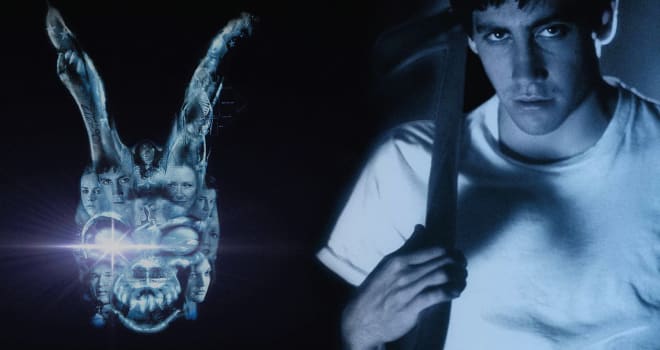 We thought we did a pretty good job unearthing the secrets of "
We thought we did a pretty good job unearthing the secrets of "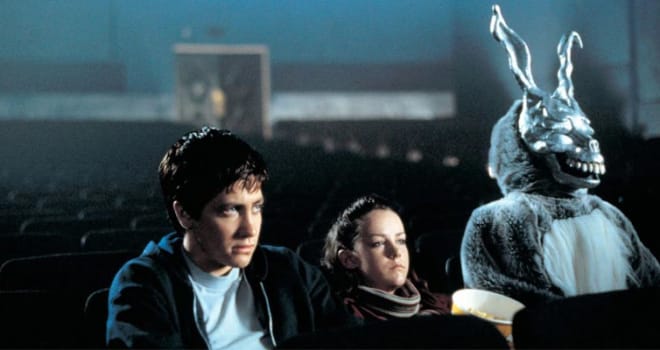 1. When "Darko" writer/director
1. When "Darko" writer/director 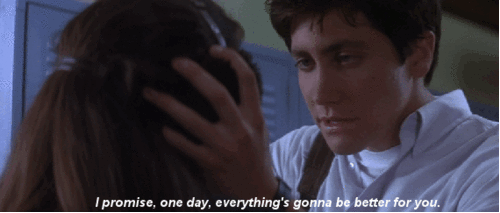 2. Kelly said the germ of the story was the falling jet engine, which he said in a 2011 interview was inspired by a newspaper story he remembered reading as a child in his hometown of Richmond, Virginia, "about a big piece of ice that fell from the wing of a jet plane and smashed through this kid's roof and landed on his bed. He wasn't there at the time, but if he had been it would have killed him."
2. Kelly said the germ of the story was the falling jet engine, which he said in a 2011 interview was inspired by a newspaper story he remembered reading as a child in his hometown of Richmond, Virginia, "about a big piece of ice that fell from the wing of a jet plane and smashed through this kid's roof and landed on his bed. He wasn't there at the time, but if he had been it would have killed him."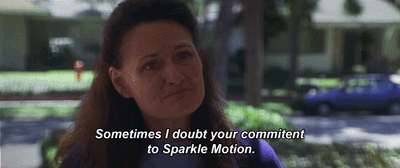 3. The script impressed many power players in Hollywood, but Kelly refused to sell it unless he could direct it as well. After sitting on the screenplay for a year, he found two bankable actors impressed enough with his vision to produce the film and let him direct it:
3. The script impressed many power players in Hollywood, but Kelly refused to sell it unless he could direct it as well. After sitting on the screenplay for a year, he found two bankable actors impressed enough with his vision to produce the film and let him direct it: 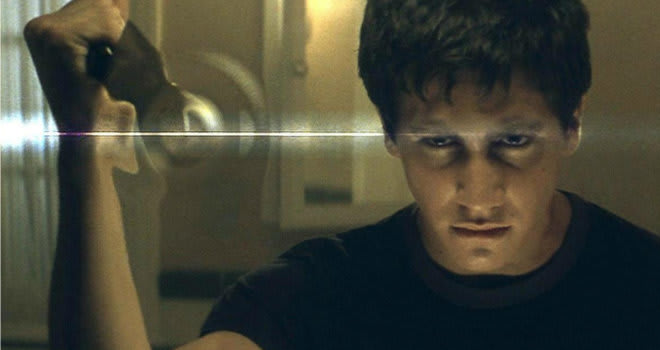 4. Shortly before the movie was to shoot, however, Schwartzman had to drop out over a scheduling conflict. Barrymore reassured Kelly that they'd be able to find a new Donnie. It wasn't long before the then-little-known Jake Gyllenhaal showed up in Barrymore's office to audition. "Right away, I knew he had the part," Kelly recalled in 2011. "Right away, he was Donnie."
4. Shortly before the movie was to shoot, however, Schwartzman had to drop out over a scheduling conflict. Barrymore reassured Kelly that they'd be able to find a new Donnie. It wasn't long before the then-little-known Jake Gyllenhaal showed up in Barrymore's office to audition. "Right away, I knew he had the part," Kelly recalled in 2011. "Right away, he was Donnie."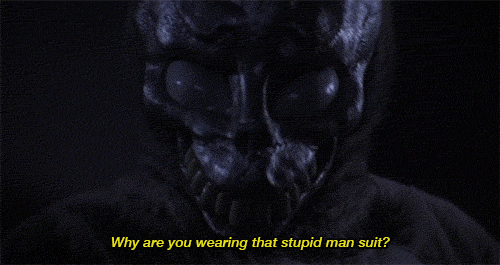 5. As for the source of Frank, the film's creepy rabbit-guy, Kelly cited Richard Adams' novel "Watership Down," which was assigned reading in his eighth-grade English class, much like in the movie. "I came up with the idea of a kid in a Halloween costume," Kelly said in 2011, "and it just became a rabbit."
5. As for the source of Frank, the film's creepy rabbit-guy, Kelly cited Richard Adams' novel "Watership Down," which was assigned reading in his eighth-grade English class, much like in the movie. "I came up with the idea of a kid in a Halloween costume," Kelly said in 2011, "and it just became a rabbit."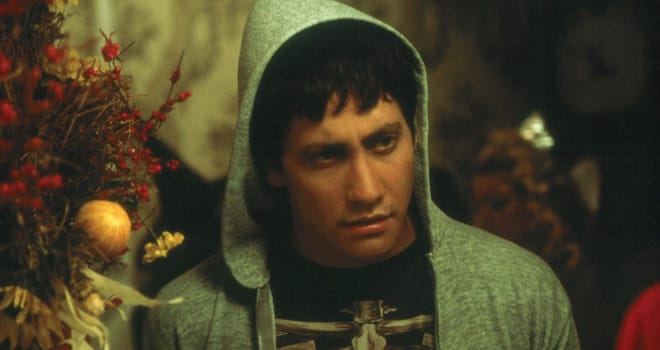 6. Kelly shot "Darko" in just 28 days -- the same time frame as in Frank's apocalyptic prophecy. Things went so fast that Kelly often forgot to eat. In a recent interview, Kelly claims this is typical film-set behavior for him and that he always loses between 10 and 15 pounds during a movie shoot.
6. Kelly shot "Darko" in just 28 days -- the same time frame as in Frank's apocalyptic prophecy. Things went so fast that Kelly often forgot to eat. In a recent interview, Kelly claims this is typical film-set behavior for him and that he always loses between 10 and 15 pounds during a movie shoot.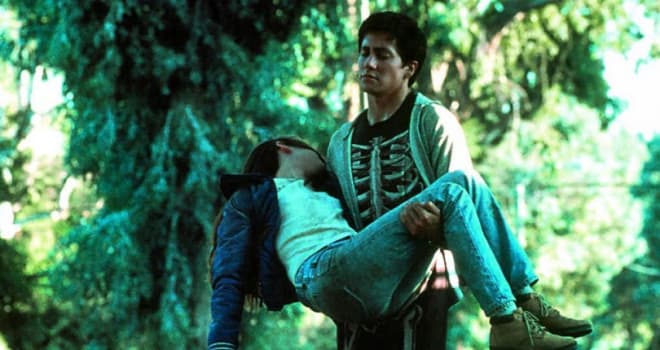 7. It wasn't all stressful. In 2004, Kelly recalled that the scene where Kitty Farmer (
7. It wasn't all stressful. In 2004, Kelly recalled that the scene where Kitty Farmer (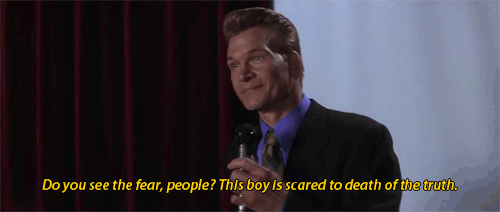 8. As the sinister Jim Cunningham,
8. As the sinister Jim Cunningham, 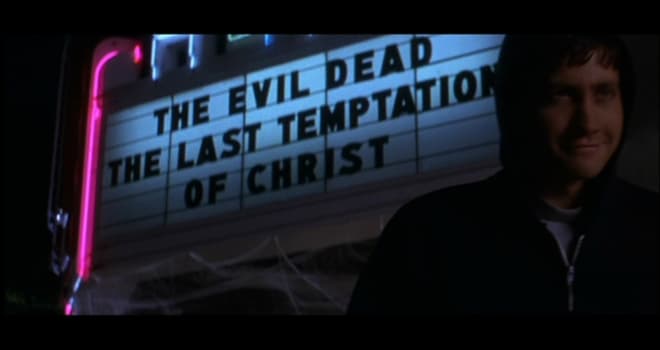 9. The Halloween movie double-feature of "
9. The Halloween movie double-feature of " 10. "Darko" premiered at the 2001 Sundance Film Festival, where it looked like it was going to join the folklore of Sundance discovery success stories. Even indie mogul
10. "Darko" premiered at the 2001 Sundance Film Festival, where it looked like it was going to join the folklore of Sundance discovery success stories. Even indie mogul 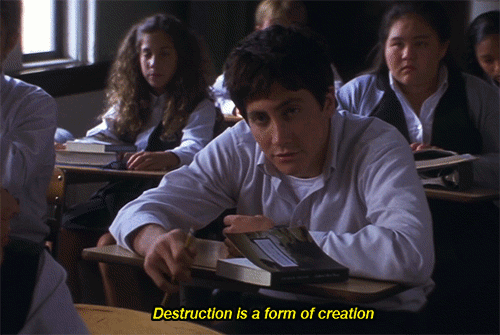 11. "Darko" nearly went straight to cable before indie distributor Newmarket came to the rescue. It had enjoyed success with another 2001 Sundance orphan -- "
11. "Darko" nearly went straight to cable before indie distributor Newmarket came to the rescue. It had enjoyed success with another 2001 Sundance orphan -- "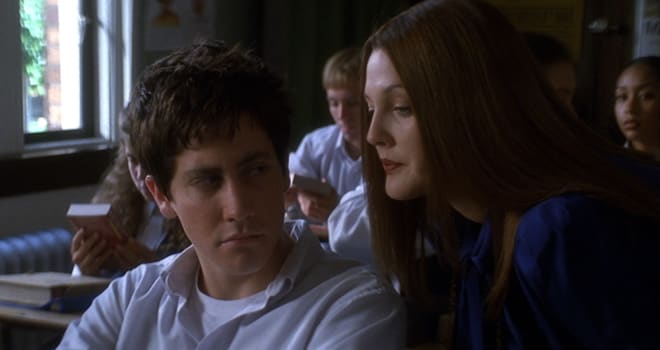 12. Newmarket faced an even bigger challenge marketing the movie after 9/11. Here was a grim, apocalyptic tale whose inciting incident is debris from a jetliner accident falling over Virginia. Its poster featured Arabic-style lettering, which Newmarket quickly changed to a more traditional Trajan font common on movie posters.
12. Newmarket faced an even bigger challenge marketing the movie after 9/11. Here was a grim, apocalyptic tale whose inciting incident is debris from a jetliner accident falling over Virginia. Its poster featured Arabic-style lettering, which Newmarket quickly changed to a more traditional Trajan font common on movie posters.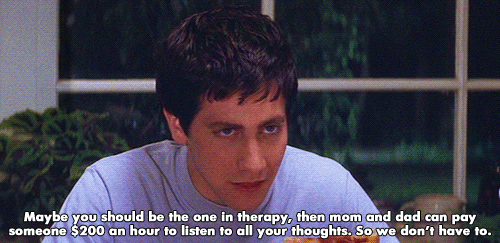 13. The film cost $4.5 million to make, but earned back just $515,000 upon its initial release. Even the 2004 Director's Cut release, after the movie had become a cult smash, earned just $728,000 in theaters.
13. The film cost $4.5 million to make, but earned back just $515,000 upon its initial release. Even the 2004 Director's Cut release, after the movie had become a cult smash, earned just $728,000 in theaters.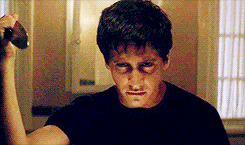 14. Still, the movie made more than $10 million on home video, thanks to an ardent fan base that arguably started at Pioneer Two Boots, a pizzeria/theater that showed midnight movies in New York's East Village neighborhood. Kelly was walking past it one night when he saw his movie's poster in the window and learned that "Darko" had been selling out 2 a.m. screenings there for weeks.
14. Still, the movie made more than $10 million on home video, thanks to an ardent fan base that arguably started at Pioneer Two Boots, a pizzeria/theater that showed midnight movies in New York's East Village neighborhood. Kelly was walking past it one night when he saw his movie's poster in the window and learned that "Darko" had been selling out 2 a.m. screenings there for weeks.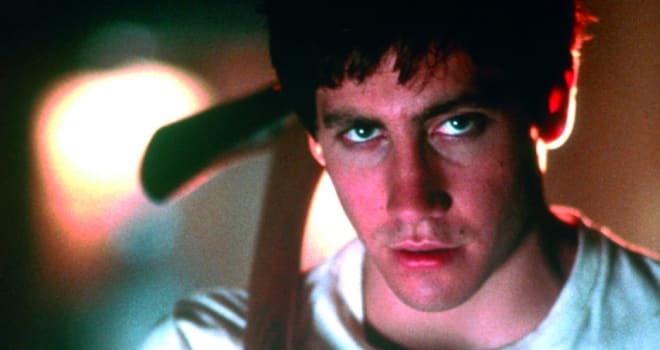 15. Fans enjoy arguing over whether Donnie is a delusional schizophrenic or really has time-warping powers. Kelly has said both interpretations are valid, though he prefers the latter.
15. Fans enjoy arguing over whether Donnie is a delusional schizophrenic or really has time-warping powers. Kelly has said both interpretations are valid, though he prefers the latter. Every generation seems to get the Shakespeare adaptations it deserves, and in the mid-'90s, that meant
Every generation seems to get the Shakespeare adaptations it deserves, and in the mid-'90s, that meant  1. Hollywood courted Luhrmann after the Australian director's low-budget debut, "
1. Hollywood courted Luhrmann after the Australian director's low-budget debut, " 3. The idea of making the Montagues and Capulets into rival street gangs had been done before, most famously in "
3. The idea of making the Montagues and Capulets into rival street gangs had been done before, most famously in " 5. Luhrmann found his leading man in a magazine's party picture pages, shortly after DiCaprio's Oscar nomination for "
5. Luhrmann found his leading man in a magazine's party picture pages, shortly after DiCaprio's Oscar nomination for " 7. For Juliet, Luhrmann cast
7. For Juliet, Luhrmann cast  9. Luhrmann embarked on a worldwide search for a new Juliet, and while he was unfamiliar with 17-year-old Danes, DiCaprio was an admirer of hers, based on her starring performance on TV's "
9. Luhrmann embarked on a worldwide search for a new Juliet, and while he was unfamiliar with 17-year-old Danes, DiCaprio was an admirer of hers, based on her starring performance on TV's "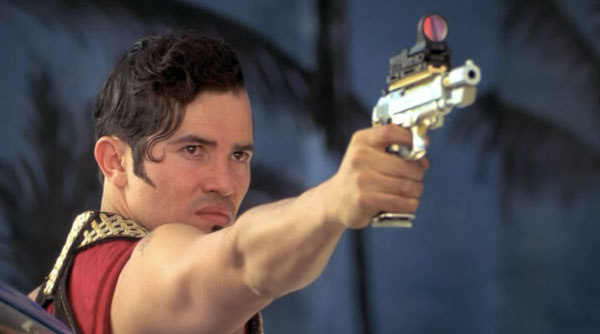 11.
11.  13. The production design is so full of references to various Shakespeare plays -- in retail signs (Rosencrantzky's Burgers), names of consumer products (Agincourt cigarettes), and graffiti on walls -- that it takes many repeat viewings to notice them all.
13. The production design is so full of references to various Shakespeare plays -- in retail signs (Rosencrantzky's Burgers), names of consumer products (Agincourt cigarettes), and graffiti on walls -- that it takes many repeat viewings to notice them all. 15. "Romeo + Juliet" cost a reported $14.5 million to make. It earned back $46.4 million in the United States and a total of $147.6 million around the world. Luhrmann was especially pleased that the film opened at No. 1 at home in Australia, ahead of imported Hollywood disaster movie "
15. "Romeo + Juliet" cost a reported $14.5 million to make. It earned back $46.4 million in the United States and a total of $147.6 million around the world. Luhrmann was especially pleased that the film opened at No. 1 at home in Australia, ahead of imported Hollywood disaster movie " 17. Three years after gospel choirboy Quindon Tarver's rendition of Rozalla's "Everybody's Free (To Feel Good)" adorned the "Romeo + Juliet" soundtrack, Luhrmann remixed it with a spoken-word essay, an imaginary graduation speech written by Chicago Tribune columnist Mary Schmich but commonly misattributed to novelist
17. Three years after gospel choirboy Quindon Tarver's rendition of Rozalla's "Everybody's Free (To Feel Good)" adorned the "Romeo + Juliet" soundtrack, Luhrmann remixed it with a spoken-word essay, an imaginary graduation speech written by Chicago Tribune columnist Mary Schmich but commonly misattributed to novelist 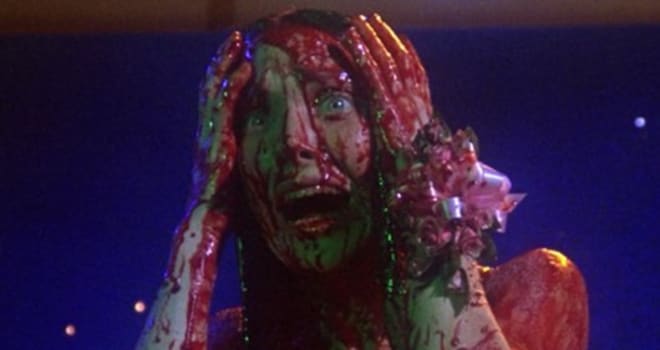 Worst. Prom. Ever.
Worst. Prom. Ever.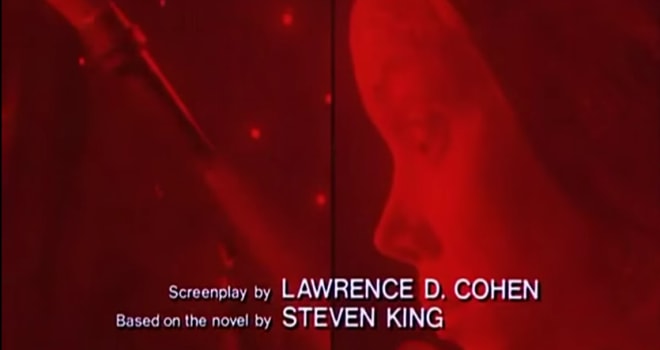
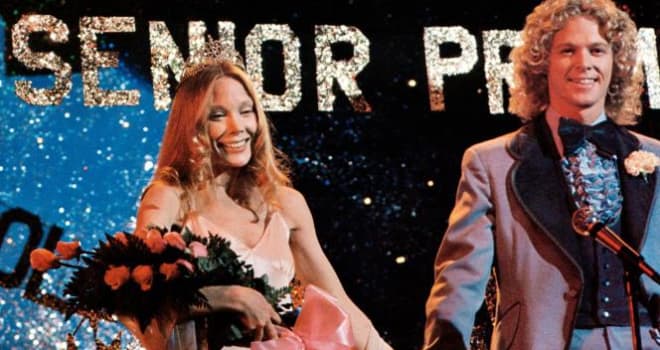 4. Irving and Katt (above) had dated a year before making "Carrie." Their screen test included a makeout scene in the back of a car, a scene that didn't end up in the movie.
4. Irving and Katt (above) had dated a year before making "Carrie." Their screen test included a makeout scene in the back of a car, a scene that didn't end up in the movie.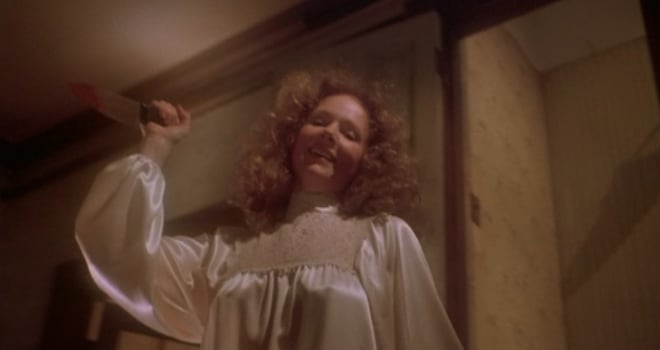 6. For Carrie's religious-fanatic mother, De Palma considered
6. For Carrie's religious-fanatic mother, De Palma considered 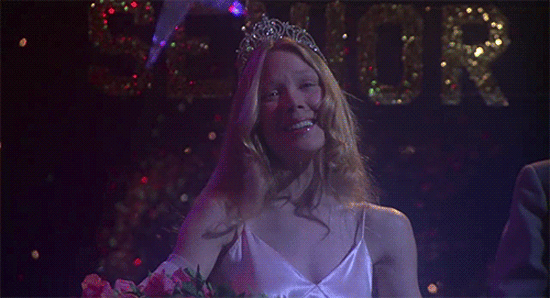 8. The prom sequence was shot on an MGM soundstage that had been the site of another celebrated fire scene, the burning of Atlanta in "
8. The prom sequence was shot on an MGM soundstage that had been the site of another celebrated fire scene, the burning of Atlanta in "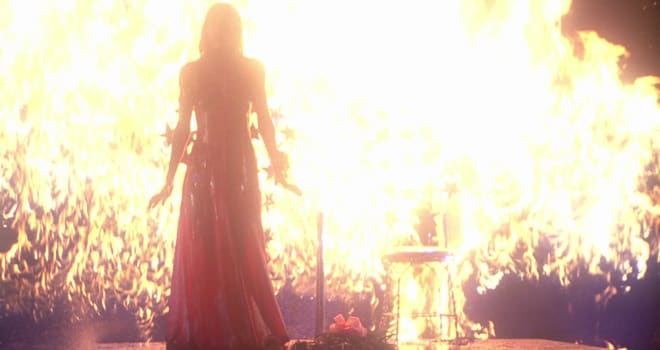 10. During the prom shoot, Soles got hit so hard with the water jet from the fire hose that she burst an eardrum. She didn't regained her full hearing for six months.
10. During the prom shoot, Soles got hit so hard with the water jet from the fire hose that she burst an eardrum. She didn't regained her full hearing for six months.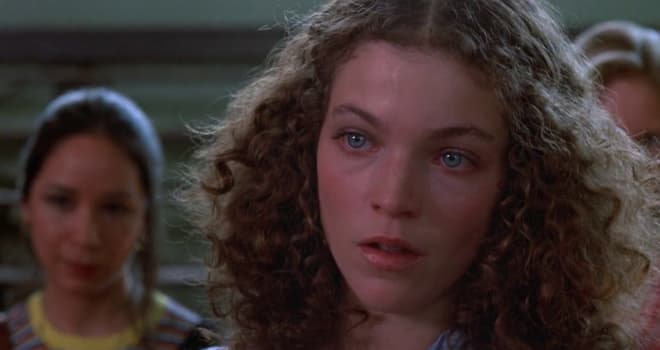 12. During the "Carrie" shoot, De Palma also fixed up
12. During the "Carrie" shoot, De Palma also fixed up 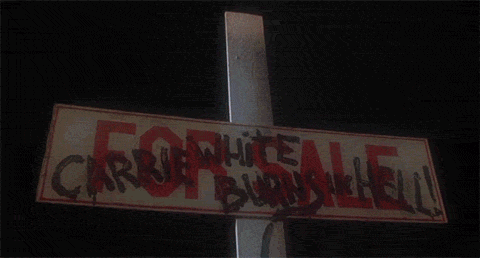 16. Fisk buried her (because De Palma was too squeamish to do it himself) in a pit under a board covered with pumice stones. There, she received a signal to reach out and grab Irving's arm. The rocks scratched up Spacek's arm, but she felt the result was worth it.
16. Fisk buried her (because De Palma was too squeamish to do it himself) in a pit under a board covered with pumice stones. There, she received a signal to reach out and grab Irving's arm. The rocks scratched up Spacek's arm, but she felt the result was worth it.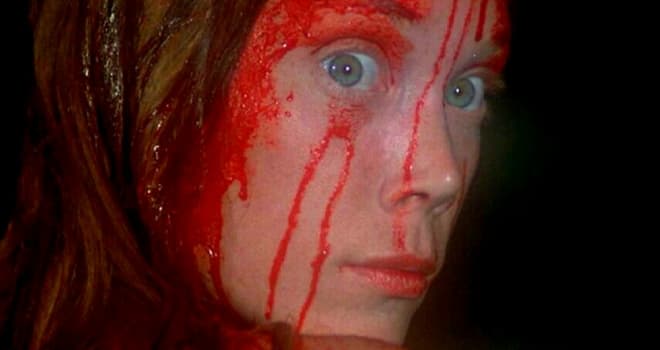 18. Since it was not taken from King's book, that final moment startled King, too, when he first watched "Carrie." "Man, I thought I was going to sh** in my pants," he recalled of the scene years later.
18. Since it was not taken from King's book, that final moment startled King, too, when he first watched "Carrie." "Man, I thought I was going to sh** in my pants," he recalled of the scene years later.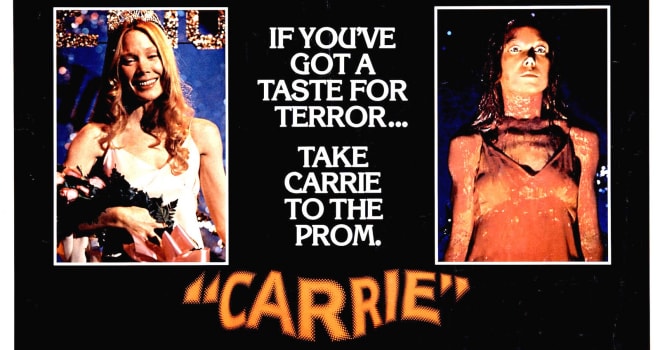 20. The Kings were the only two white people in the theater, and the author worried that an African-American audience that had come to watch the "
20. The Kings were the only two white people in the theater, and the author worried that an African-American audience that had come to watch the "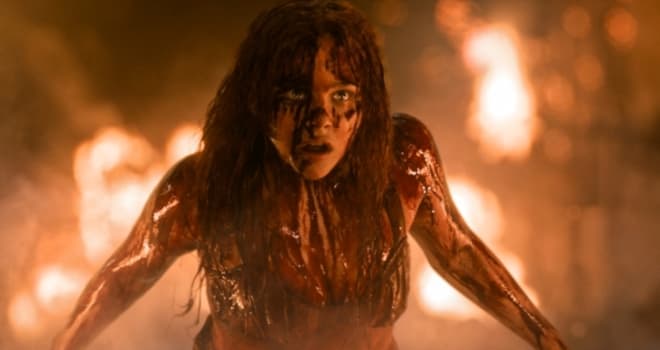 23. The film has spawned numerous follow-ups, including a sequel, a notorious flop Broadway musical, and
23. The film has spawned numerous follow-ups, including a sequel, a notorious flop Broadway musical, and 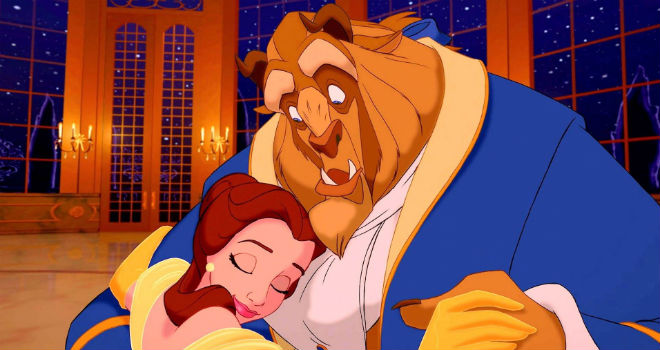 Released 25 years ago this week (on November 13, 1991), Disney's "
Released 25 years ago this week (on November 13, 1991), Disney's "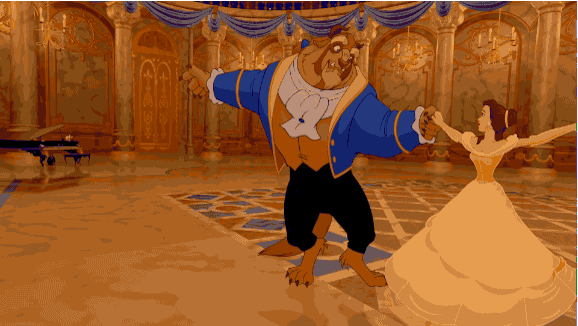 1. There are only five minutes in the film with no music.
1. There are only five minutes in the film with no music.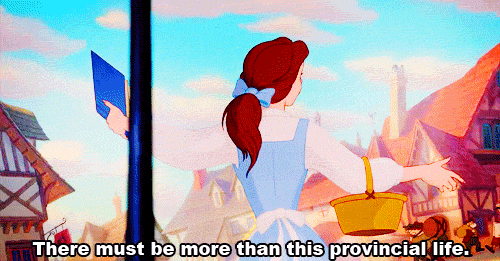 4. Woolverton modeled the fiercely independent, book-smart Belle after
4. Woolverton modeled the fiercely independent, book-smart Belle after 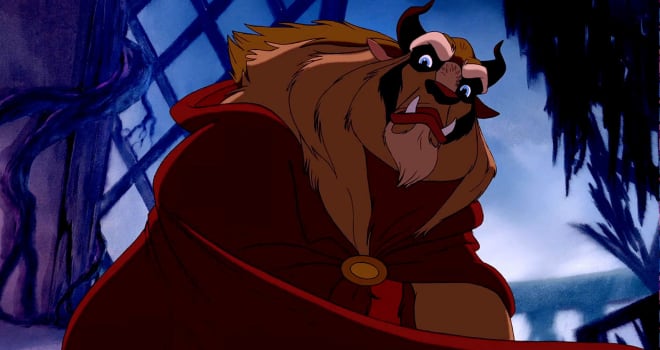 7. Animator Glen Keane designed the Beast's hybrid features after several visits to London's Regents Park Zoo. He gave Beast a lion's mane, a buffalo's head and beard, a gorilla's brow, a wild boar's tusks, a bear's body, a wolf's legs and tail, and a man's eyes.
7. Animator Glen Keane designed the Beast's hybrid features after several visits to London's Regents Park Zoo. He gave Beast a lion's mane, a buffalo's head and beard, a gorilla's brow, a wild boar's tusks, a bear's body, a wolf's legs and tail, and a man's eyes.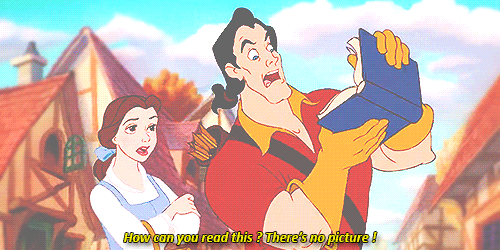 8.
8. 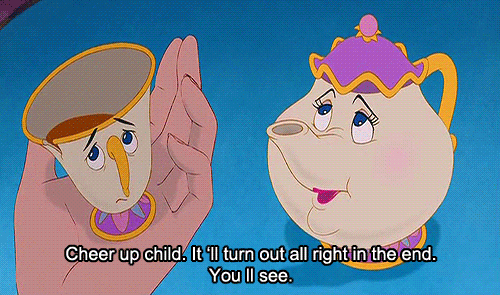 9.
9. 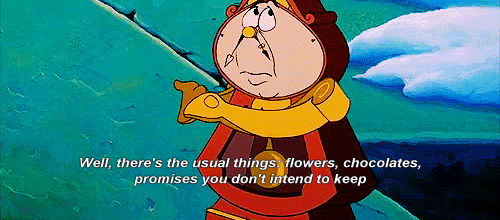 12. Stiers improvised the punchline in Cogsworth's romantic advice to Beast. Along with "flowers, chocolates," the actor added, "promises you don't intend to keep."
12. Stiers improvised the punchline in Cogsworth's romantic advice to Beast. Along with "flowers, chocolates," the actor added, "promises you don't intend to keep."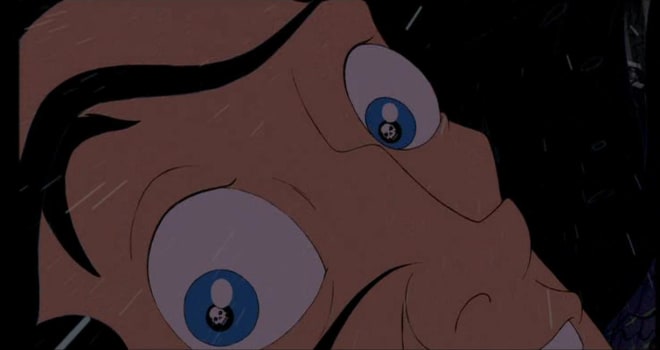 15. If you freeze the frame on Gaston's face (above) during his fatal plunge, you'll see tiny skulls in his pupils.
15. If you freeze the frame on Gaston's face (above) during his fatal plunge, you'll see tiny skulls in his pupils.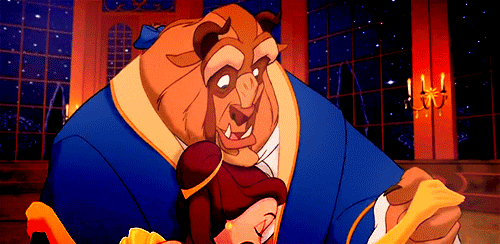 17. Keane grumbled that his creation should never have been turned back into a man. He suggested that Belle could at least ask her newly-human love if he would ever consider growing a beard. Oh, well, maybe that line will make it into the Emma Watson version.
17. Keane grumbled that his creation should never have been turned back into a man. He suggested that Belle could at least ask her newly-human love if he would ever consider growing a beard. Oh, well, maybe that line will make it into the Emma Watson version.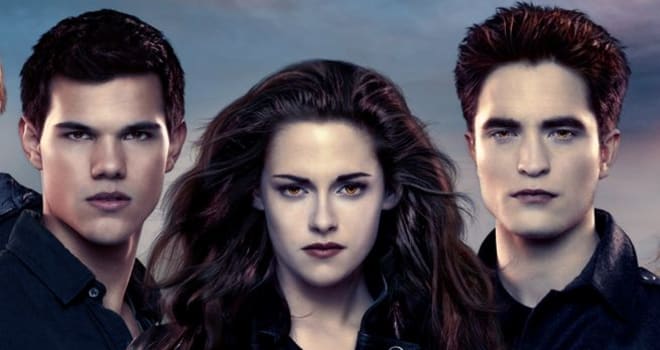 It's been five years since the wedding of the millennium. No, not Kate and William -- Bella and Edward.
It's been five years since the wedding of the millennium. No, not Kate and William -- Bella and Edward. 1. MTV Films optioned the "
1. MTV Films optioned the "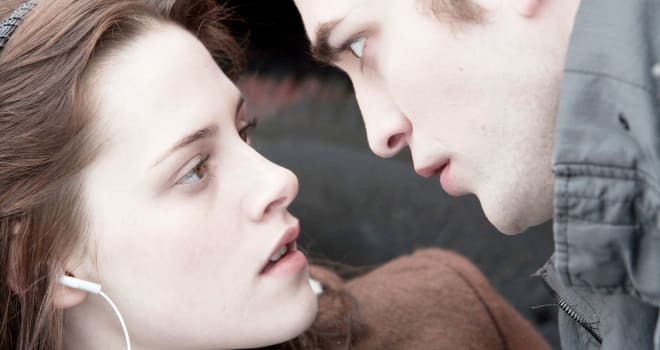 5.
5. 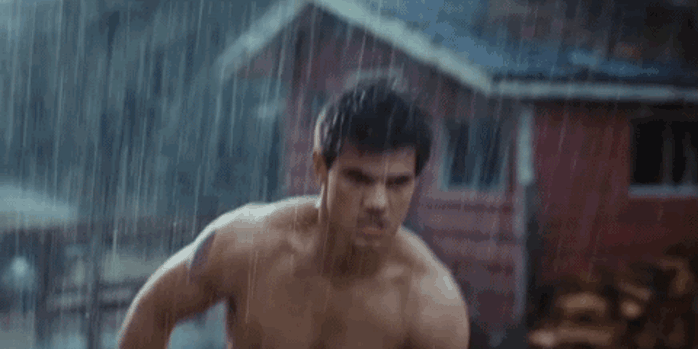 7. As Jacob,
7. As Jacob, 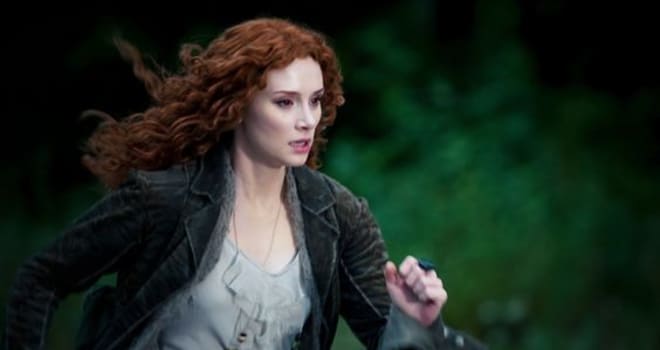 9. The final two movies, "Breaking Dawn" Parts 1 and
9. The final two movies, "Breaking Dawn" Parts 1 and 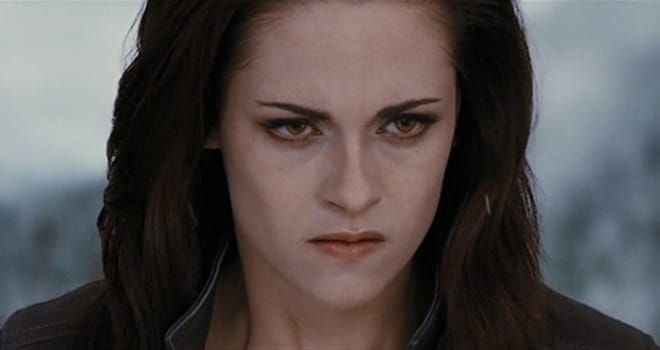 11. Might there be further "Twilight" movies? There might, if Meyer revisits her universe the way J.K. Rowling has with her "Harry Potter" spinoff "Fantastic Beasts and Where to Find Them."
11. Might there be further "Twilight" movies? There might, if Meyer revisits her universe the way J.K. Rowling has with her "Harry Potter" spinoff "Fantastic Beasts and Where to Find Them." Time to feel old, everybody: "
Time to feel old, everybody: "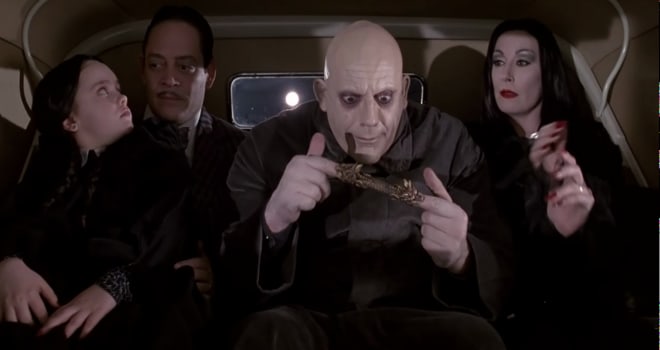 1. Orion Pictures originally developed the adaptation of the classic 1964 TV series, as they had the rights to the show at the time. But Orion was struggling financially, so Paramount stepped in with funds to complete the film and scored North America distribution, too, as a result. But Orion kept international rights, which now belong to MGM after they purchased Orion. (Everybody got all that?)
1. Orion Pictures originally developed the adaptation of the classic 1964 TV series, as they had the rights to the show at the time. But Orion was struggling financially, so Paramount stepped in with funds to complete the film and scored North America distribution, too, as a result. But Orion kept international rights, which now belong to MGM after they purchased Orion. (Everybody got all that?)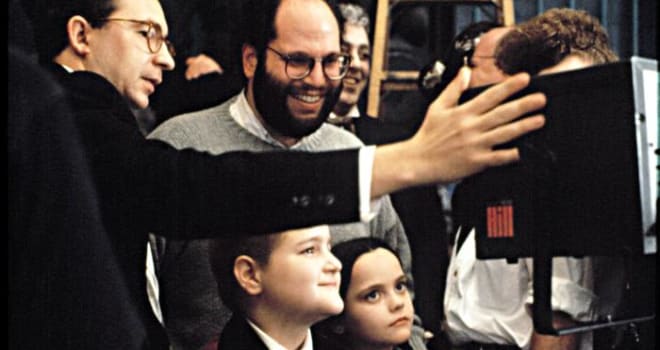 3. Sonnenfeld shot most of the film where the TV show used to shoot -- Stage 3/8 at Hollywood Center Studios in Los Angeles.
3. Sonnenfeld shot most of the film where the TV show used to shoot -- Stage 3/8 at Hollywood Center Studios in Los Angeles. 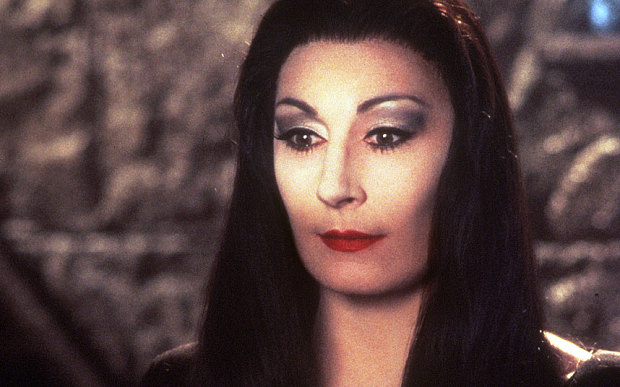 5. When Houston got the role,
5. When Houston got the role, 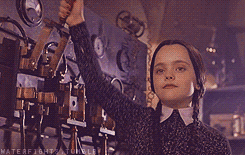 "Two weeks before we started shooting," the director recalled, "when we started rehearsing with all the actors, all the actors rebelled, because the movie Scott Rudin and I were going to shoot had this thing where Fester was perhaps an imposter, but you were never sure if he really was or not. But on the day we started to rehearse, and I remember this really fondly, the spokesperson that all the other actors chose to speak on their behalf was a 10-year-old Christina Ricci. And she gave this really impassioned plea that Fester shouldn't be an imposter." The director also acknowledged that his cast was right -- "it was the better way to go." (
"Two weeks before we started shooting," the director recalled, "when we started rehearsing with all the actors, all the actors rebelled, because the movie Scott Rudin and I were going to shoot had this thing where Fester was perhaps an imposter, but you were never sure if he really was or not. But on the day we started to rehearse, and I remember this really fondly, the spokesperson that all the other actors chose to speak on their behalf was a 10-year-old Christina Ricci. And she gave this really impassioned plea that Fester shouldn't be an imposter." The director also acknowledged that his cast was right -- "it was the better way to go." (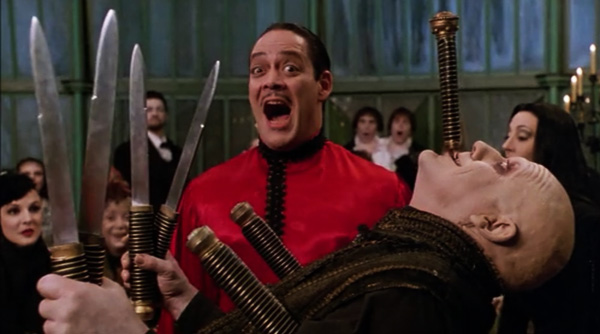 7. Not everyone was a fan of Gomez and Fester's "Mamushka" dance number. The full version was cut from the film following -- what else? -- a test screening complaint that the bit stalled the movie's pacing.
7. Not everyone was a fan of Gomez and Fester's "Mamushka" dance number. The full version was cut from the film following -- what else? -- a test screening complaint that the bit stalled the movie's pacing.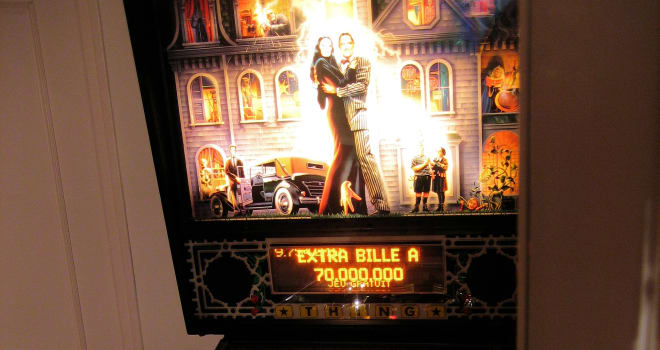 9. The film was a hit in arcades, too. The pinball machine (above) based on the movie, released in March 1992, is the bestselling pinball machine of all time.
9. The film was a hit in arcades, too. The pinball machine (above) based on the movie, released in March 1992, is the bestselling pinball machine of all time.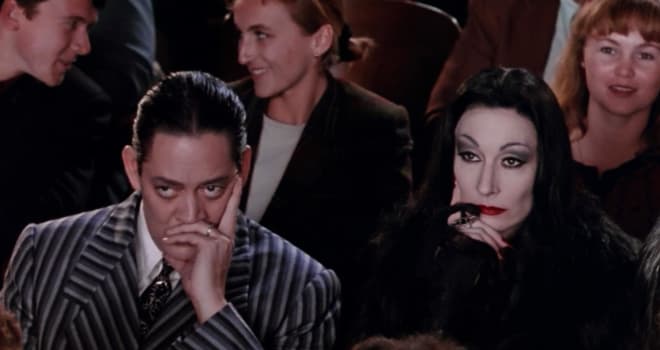 11. It opened opposite some then-fierce competition: "An American Tail: Fievel Goes West" and Disney's "Beauty and the Beast." It opened in the top spot and stayed there for two weeks.
11. It opened opposite some then-fierce competition: "An American Tail: Fievel Goes West" and Disney's "Beauty and the Beast." It opened in the top spot and stayed there for two weeks. 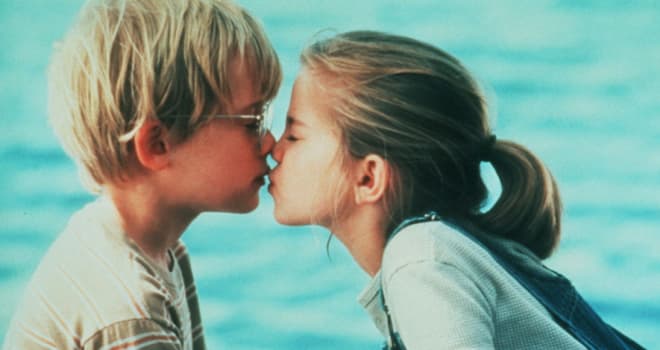 "
"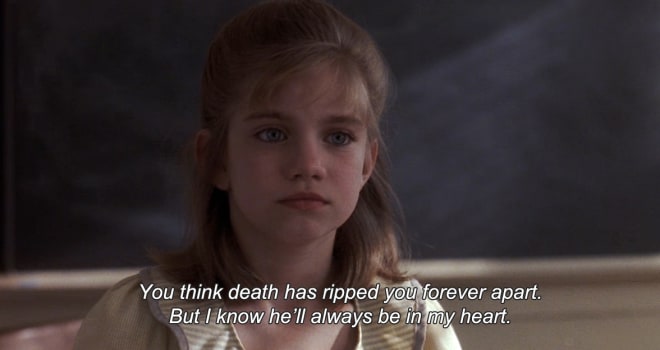 One of the larger plot points in "My Girl" is (spoiler alert for a movie that's 25 years old) Macaulay Culkin dies after getting stung by many, many bees. It's a powerful moment and adds to the movie's themes of maturation and personal growth. But, back in 1991, child psychologists were worried about the damage it would inflict on children who watched the film. Yes, seriously.
One of the larger plot points in "My Girl" is (spoiler alert for a movie that's 25 years old) Macaulay Culkin dies after getting stung by many, many bees. It's a powerful moment and adds to the movie's themes of maturation and personal growth. But, back in 1991, child psychologists were worried about the damage it would inflict on children who watched the film. Yes, seriously.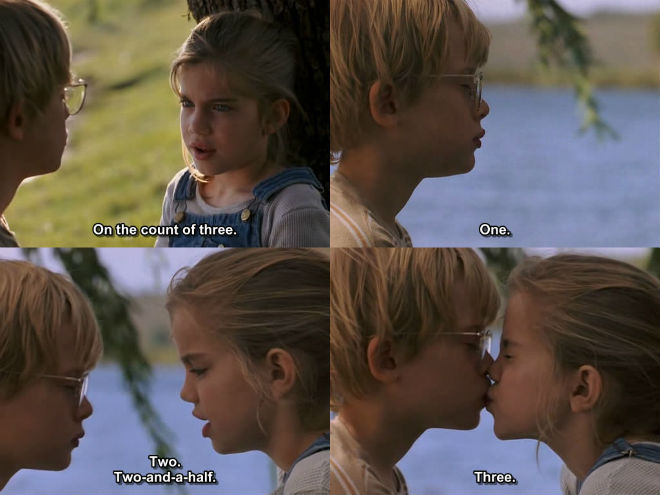 Back when the
Back when the 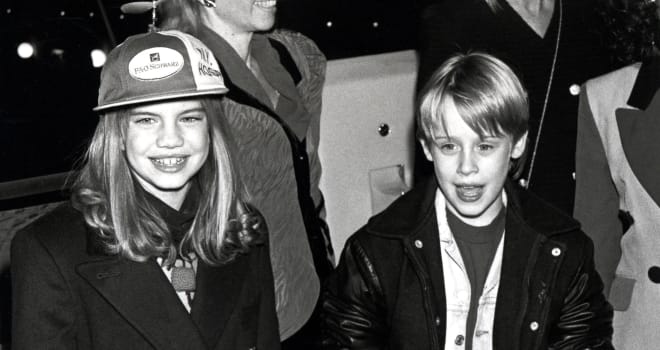 When E! caught up with Clumsky, who is having an incredible second wind thanks to parts in television series like "Veep" and "Hannibal" (where -- it's all connected! -- she played a Clarice Starling stand-in) and movies like "In the Loop" and "The End of the Tour," in 2013, she admitted that she hasn't spoken to her "My Girl" costar in 20 years. Considering his somewhat outrageous behavior in the years since becoming a child superstar, it's not all that surprising. But it's still sad.
When E! caught up with Clumsky, who is having an incredible second wind thanks to parts in television series like "Veep" and "Hannibal" (where -- it's all connected! -- she played a Clarice Starling stand-in) and movies like "In the Loop" and "The End of the Tour," in 2013, she admitted that she hasn't spoken to her "My Girl" costar in 20 years. Considering his somewhat outrageous behavior in the years since becoming a child superstar, it's not all that surprising. But it's still sad.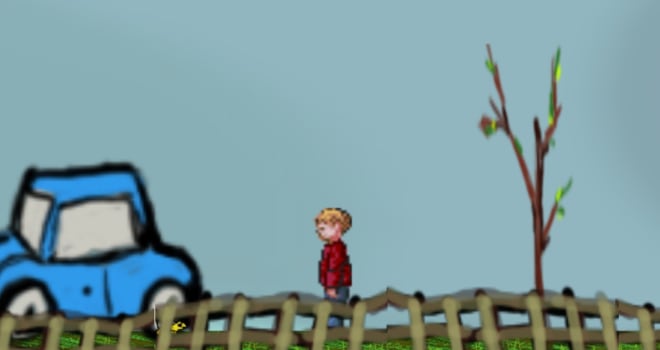 In 2014, the film inspired an online video game rendered in the classic 8-bit style. In the game, you play as Culkin's character and are directed, as the game begins, to "Accept your fate." And yes, there is a run-in with bees. UK paper
In 2014, the film inspired an online video game rendered in the classic 8-bit style. In the game, you play as Culkin's character and are directed, as the game begins, to "Accept your fate." And yes, there is a run-in with bees. UK paper 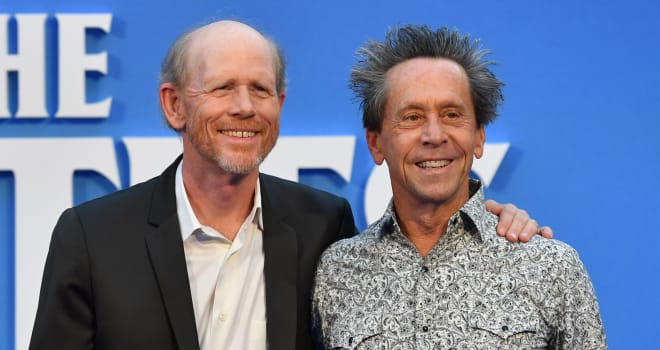 According to the semi-reliable
According to the semi-reliable 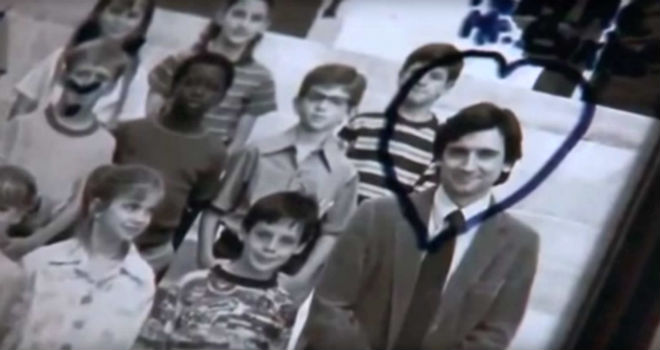 Apparently, Anthrax, the noisy rock band whose music inspires countless bored husbands to head bang in their cars on the way to the accounting firm where they work, was a huge fan of the movie. There's a line of dialogue spoken by
Apparently, Anthrax, the noisy rock band whose music inspires countless bored husbands to head bang in their cars on the way to the accounting firm where they work, was a huge fan of the movie. There's a line of dialogue spoken by 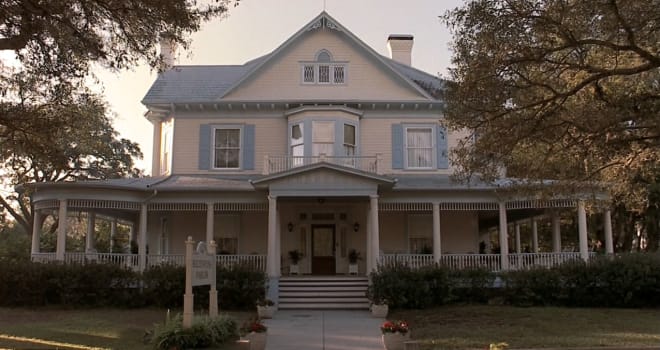 Hidden inside an
Hidden inside an 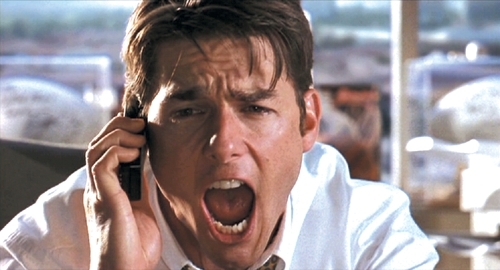 "
"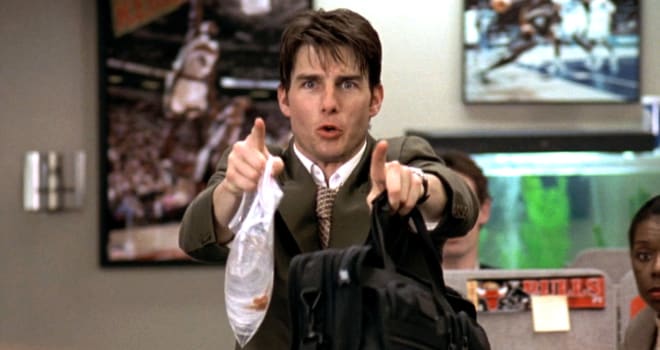 1. After the failure of his 1992 movie "
1. After the failure of his 1992 movie "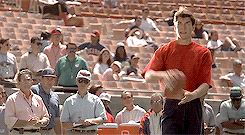 3. He also claims to have taught
3. He also claims to have taught 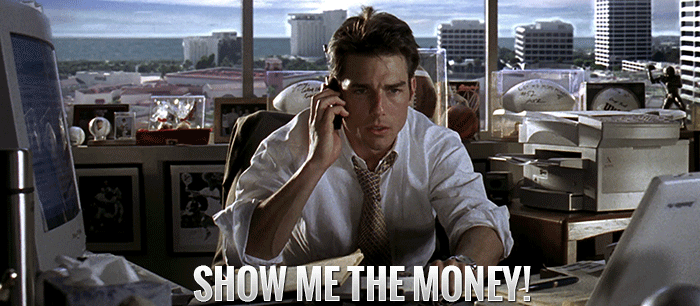 5. Crowe has also credited McDonald with coining the phrase "Show me the money."
5. Crowe has also credited McDonald with coining the phrase "Show me the money."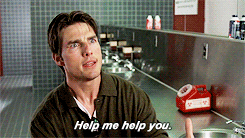 7. Cruise was Crowe's next choice, though he'd been told the A-lister wouldn't want to play a struggling loser. "In fact," Crowe learned, "he was dying to play someone who was on the ropes."
7. Cruise was Crowe's next choice, though he'd been told the A-lister wouldn't want to play a struggling loser. "In fact," Crowe learned, "he was dying to play someone who was on the ropes."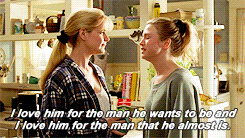 9. Zellweger, then little-known, auditioned for Dorothy three times over the space of a month. Cruise was there for her final reading, and that made all the difference. Crowe videotaped the audition and saw Cruise reacting to Zellweger "in that great way that
9. Zellweger, then little-known, auditioned for Dorothy three times over the space of a month. Cruise was there for her final reading, and that made all the difference. Crowe videotaped the audition and saw Cruise reacting to Zellweger "in that great way that 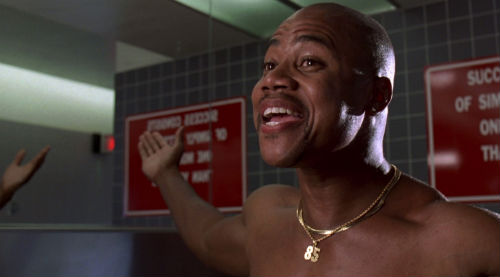 11. Gooding disarmed and won over Cruise and Crowe during his audition by performing the locker room scene naked as written. His high school football background gave him the chops to play Rod, though he also went through a week of training camp to prepare.
11. Gooding disarmed and won over Cruise and Crowe during his audition by performing the locker room scene naked as written. His high school football background gave him the chops to play Rod, though he also went through a week of training camp to prepare.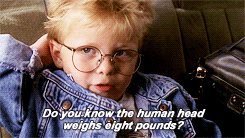 13. To play Ray, Crowe wanted a child who didn't seem like a professional actor. But the one he hired didn't work out and had to be replaced after three weeks.
13. To play Ray, Crowe wanted a child who didn't seem like a professional actor. But the one he hired didn't work out and had to be replaced after three weeks.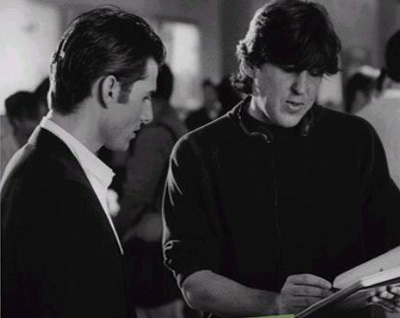 15. No Cameron Crowe movie would be complete without some music-business cameos. There's Crowe's former boss, Rolling Stone founder Jann Wenner, playing Jerry's boss at Sports Management International. That's the late
15. No Cameron Crowe movie would be complete without some music-business cameos. There's Crowe's former boss, Rolling Stone founder Jann Wenner, playing Jerry's boss at Sports Management International. That's the late 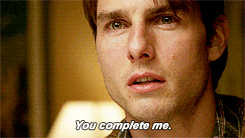 17. Life Imitates Art moment: Shortly after Gooding filmed the "Are you Hootie?" scene, a fan in an airport really did mistake the actor for Hootie and the Blowfish frontman Darius Rucker. By the way, in Spain, the line is dubbed, "Are you Ice-T?" because Rucker and his band weren't that famous there.
17. Life Imitates Art moment: Shortly after Gooding filmed the "Are you Hootie?" scene, a fan in an airport really did mistake the actor for Hootie and the Blowfish frontman Darius Rucker. By the way, in Spain, the line is dubbed, "Are you Ice-T?" because Rucker and his band weren't that famous there.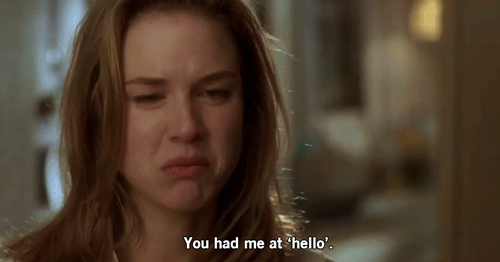 19. The movie cost a reported $50 million to make. It earned back $154 million in North America and another $120 million abroad.
19. The movie cost a reported $50 million to make. It earned back $154 million in North America and another $120 million abroad.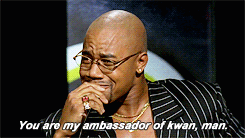 21. Of all the quotes in the movie that became pop-culture staples, Crowe was surprised that the idea of "the kwan" did not become as quotable. He really thought that one was gonna take off.
21. Of all the quotes in the movie that became pop-culture staples, Crowe was surprised that the idea of "the kwan" did not become as quotable. He really thought that one was gonna take off. 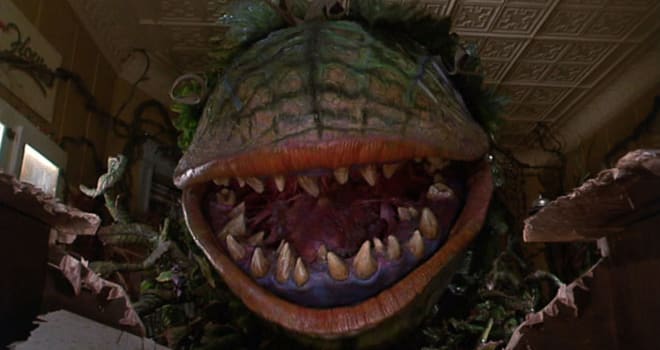 "Feed me, Seymour!"
"Feed me, Seymour!"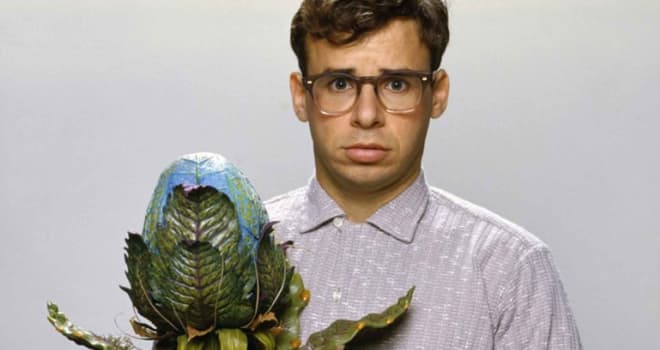 1. The film cost nearly $30 million -- at the time, it was Warner Bros. most expensive movie.
1. The film cost nearly $30 million -- at the time, it was Warner Bros. most expensive movie. 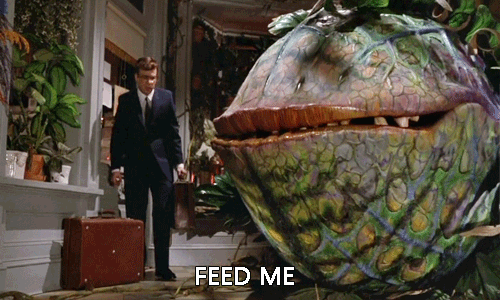 3. To depict the various sizes of the plant shown in the film, the production built six animatronic "mean green mothers." The smallest was four inches tall, while the biggest plant -- used for the finale -- stood a crazy-tall 12 feet.
3. To depict the various sizes of the plant shown in the film, the production built six animatronic "mean green mothers." The smallest was four inches tall, while the biggest plant -- used for the finale -- stood a crazy-tall 12 feet.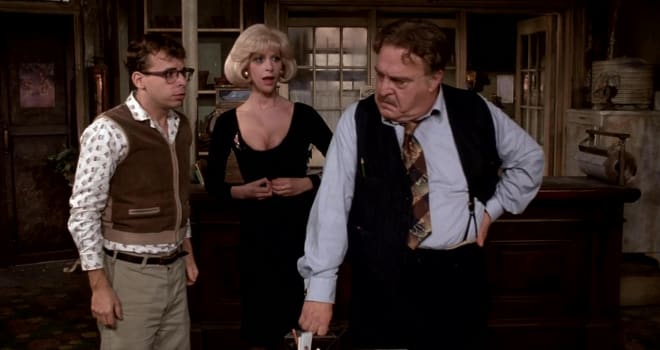 5. It's rare for performers to create a role on stage and also play the character in a movie adaptation. But
5. It's rare for performers to create a role on stage and also play the character in a movie adaptation. But 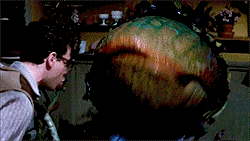 8. How they got Audrey II to sing opposite
8. How they got Audrey II to sing opposite 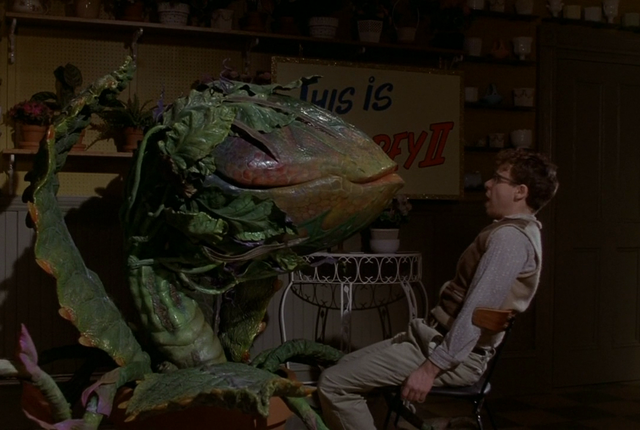 10. According to Oz on the DVD commentary, Jim Henson's son, was Audrey II's main operator during the "Feed Me" number.
10. According to Oz on the DVD commentary, Jim Henson's son, was Audrey II's main operator during the "Feed Me" number. 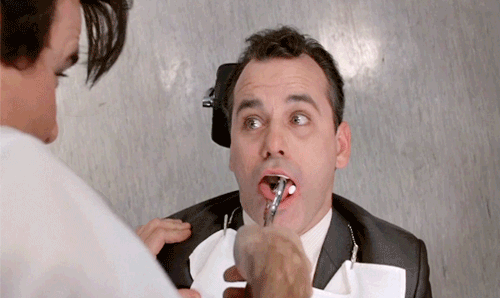 12. Speaking of Bill Murray, who plays the masochist patient of
12. Speaking of Bill Murray, who plays the masochist patient of 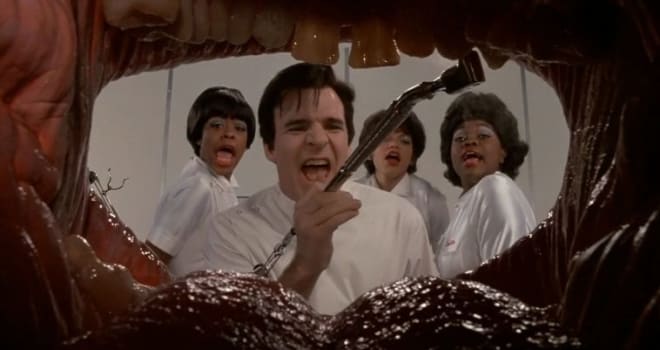 14. Martin hurt his hand while slamming open the door to Audrey's apartment building. On the special edition Blu-ray, there is an outtake real that includes the brief clip of Martin's hand shattering the door's window as Oz provides commentary over the footage.
14. Martin hurt his hand while slamming open the door to Audrey's apartment building. On the special edition Blu-ray, there is an outtake real that includes the brief clip of Martin's hand shattering the door's window as Oz provides commentary over the footage.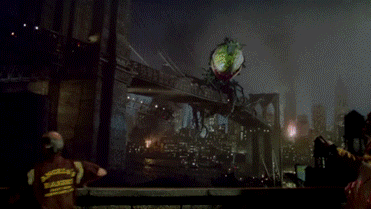 18. Oz and Howard wanted the darker ending (above), producer Geffen did not -- though Geffen respected their vision and did not force the cut on them. But since the film was made for an audience of more than just the filmmakers, Oz relented and reshot a happier ending.
18. Oz and Howard wanted the darker ending (above), producer Geffen did not -- though Geffen respected their vision and did not force the cut on them. But since the film was made for an audience of more than just the filmmakers, Oz relented and reshot a happier ending. 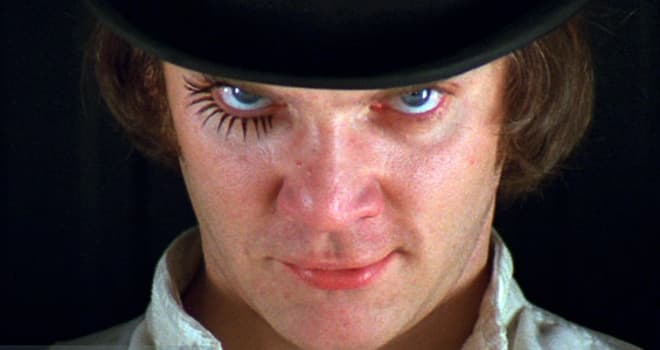 "
"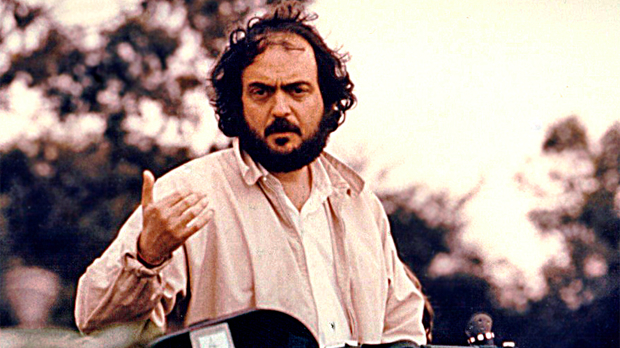 1. Kubrick was going to follow up his landmark sci-fi hit "
1. Kubrick was going to follow up his landmark sci-fi hit "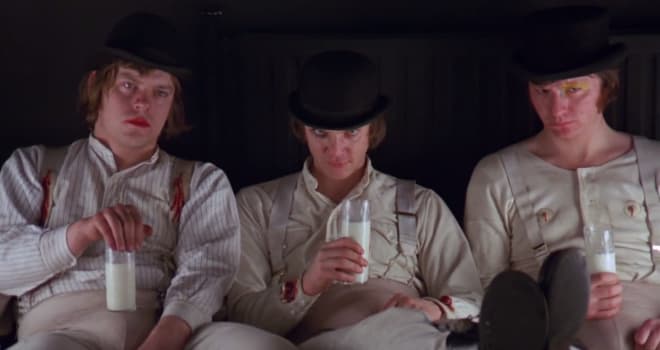 3. McDowell claims he helped come up with Alex's famous costume, including the bowler hat, the single fake eyelash, and the all-white outfit, inspired by the actor's own cricket uniform. He credits Kubrick with the idea of wearing the jockstrap outside his pants.
3. McDowell claims he helped come up with Alex's famous costume, including the bowler hat, the single fake eyelash, and the all-white outfit, inspired by the actor's own cricket uniform. He credits Kubrick with the idea of wearing the jockstrap outside his pants.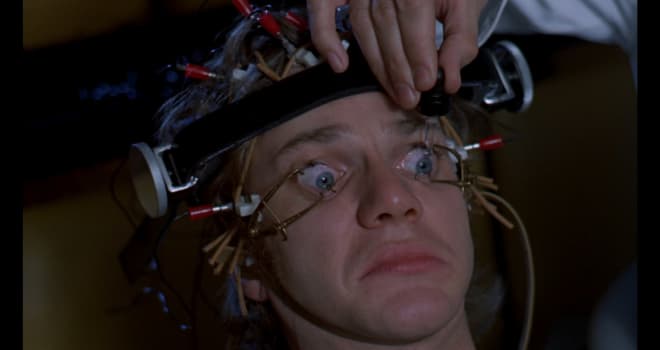 5. McDowell also suffered cracked ribs during the sequence where Alex is beaten and humiliated on stage to demonstrate the effectiveness of the therapy.
5. McDowell also suffered cracked ribs during the sequence where Alex is beaten and humiliated on stage to demonstrate the effectiveness of the therapy.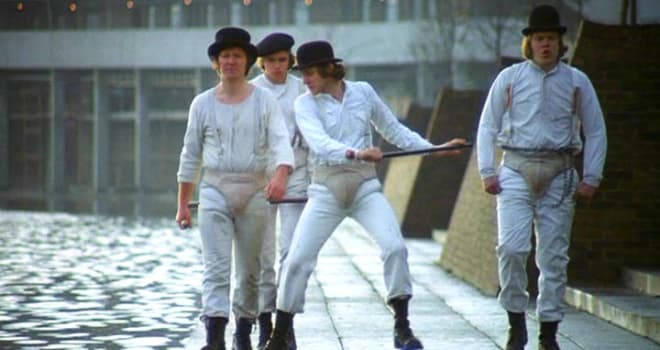 7. The notorious rape scene, during which Alex dances and belts out "
7. The notorious rape scene, during which Alex dances and belts out "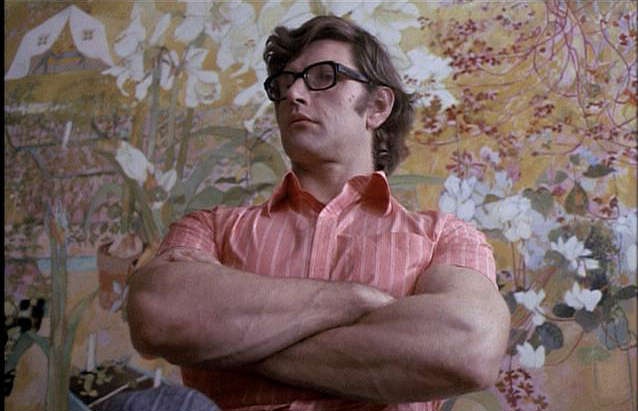 9. That beefy guy playing Julian, the writer's bodyguard and manservant, is
9. That beefy guy playing Julian, the writer's bodyguard and manservant, is 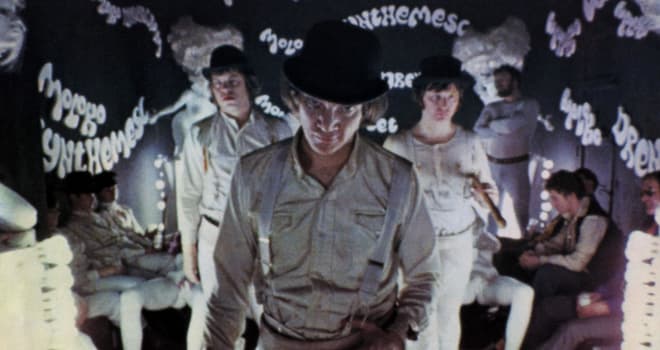 11. Despite Alex's stated fondness for Beethoven, there are actually more pieces in the score by Rossini than by old Ludwig van.
11. Despite Alex's stated fondness for Beethoven, there are actually more pieces in the score by Rossini than by old Ludwig van. 13. The movie was a financial success all over the world, including North America, where it grossed $26.6 million.
13. The movie was a financial success all over the world, including North America, where it grossed $26.6 million.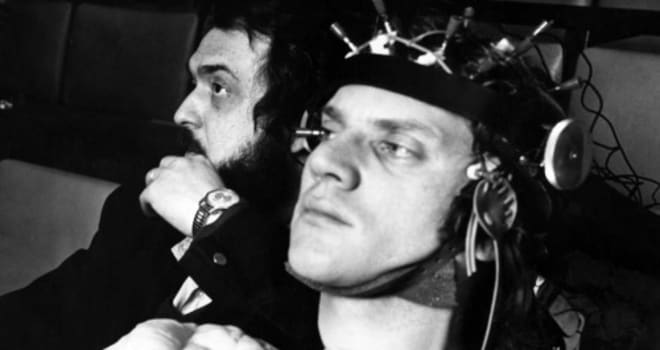 15. The film was nominated for four Oscars, including Best Picture, Best Director, Best Adapted Screenplay, Best Editing. It's the only X-rated film, along with 1969 winner "
15. The film was nominated for four Oscars, including Best Picture, Best Director, Best Adapted Screenplay, Best Editing. It's the only X-rated film, along with 1969 winner "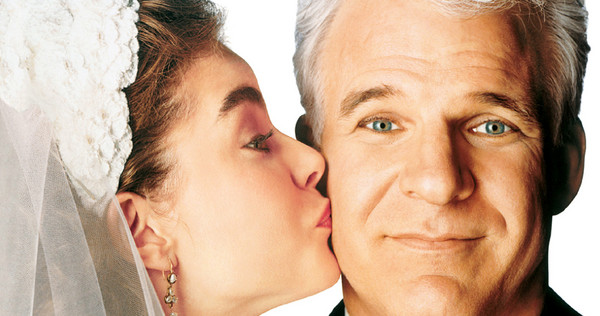 What's not to like about "
What's not to like about "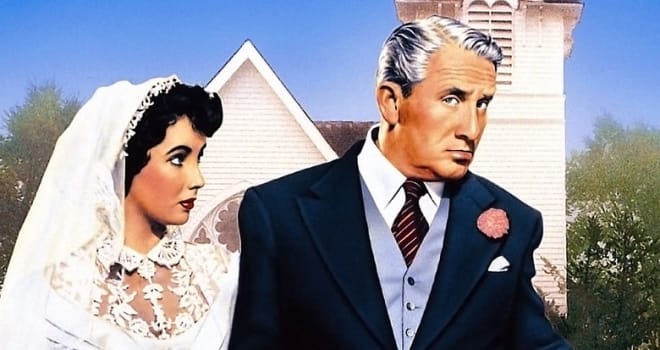 1. In the original 1950 "
1. In the original 1950 "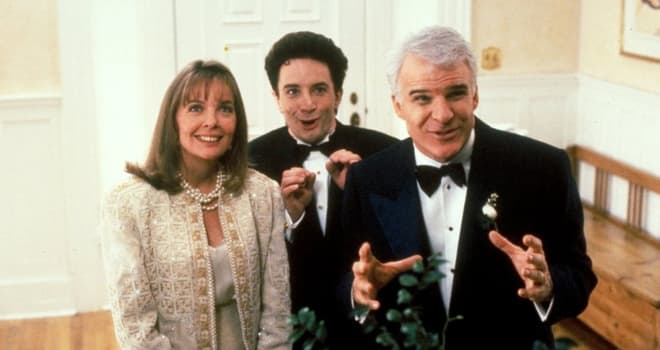 3. At 45, Martin was beginning to move on from the wacky comedies that had launched his film career and was starting to play conventional dads in movies like "
3. At 45, Martin was beginning to move on from the wacky comedies that had launched his film career and was starting to play conventional dads in movies like "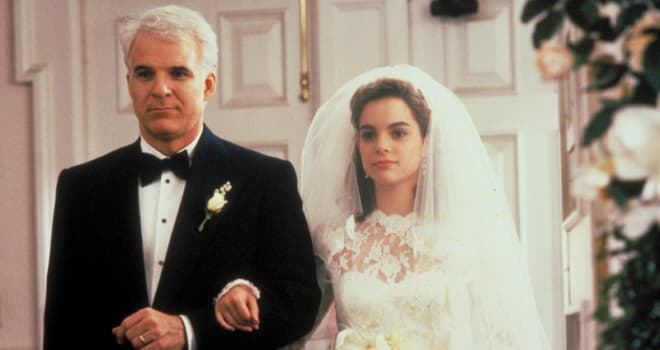 5.
5. 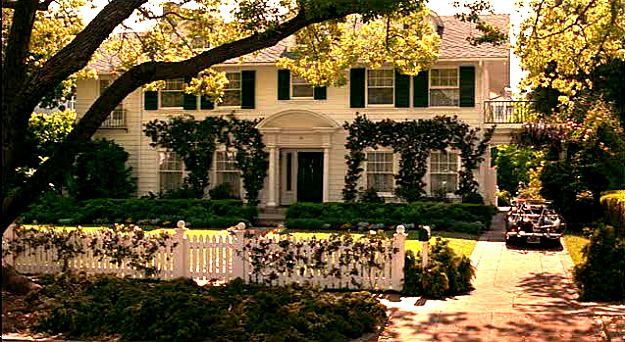 7. The picture-perfect Banks home (above) is
7. The picture-perfect Banks home (above) is 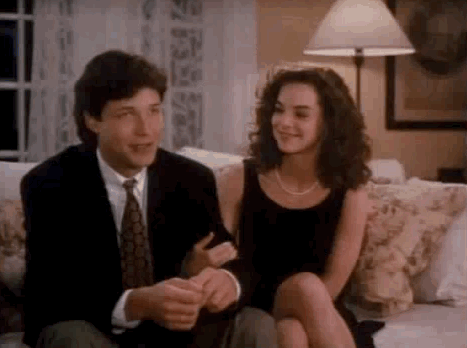 9.
9. 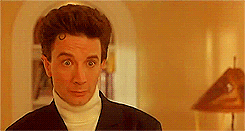 10. Perhaps the only person playing someone broader than himself was Short, as wedding planner Franck. But Short said, if anything, he was underplaying the character.
10. Perhaps the only person playing someone broader than himself was Short, as wedding planner Franck. But Short said, if anything, he was underplaying the character.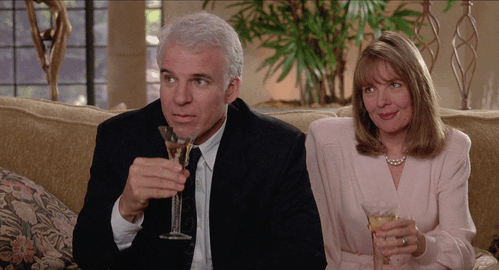 12. After the film's release, Martin claimed "Father" marked the first time "I looked at a movie I was in and liked myself."
12. After the film's release, Martin claimed "Father" marked the first time "I looked at a movie I was in and liked myself."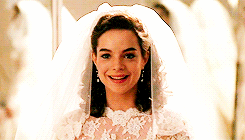 14. Williams and Newbern capitalized on their newfound fame by appearing together as a young couple, much like the MacKenzies, in a series of Hallmark ads.
14. Williams and Newbern capitalized on their newfound fame by appearing together as a young couple, much like the MacKenzies, in a series of Hallmark ads.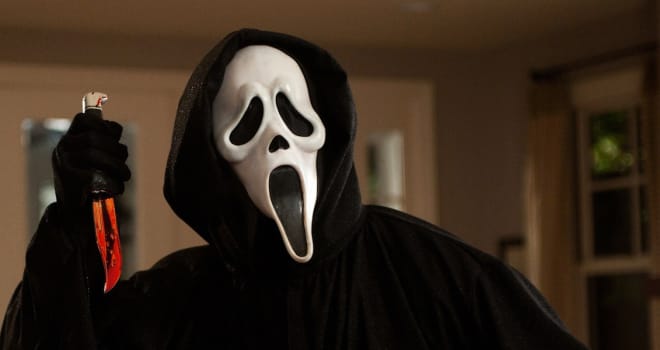 Time to feel old, '90s kids: It has been 20 years (gulp) since "
Time to feel old, '90s kids: It has been 20 years (gulp) since "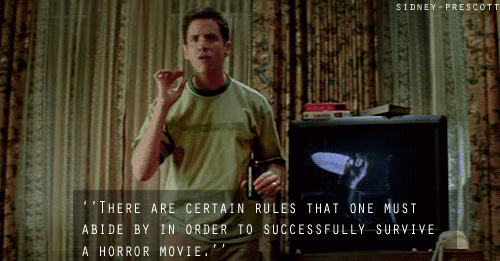 1. "Scream" was originally a screenplay by
1. "Scream" was originally a screenplay by 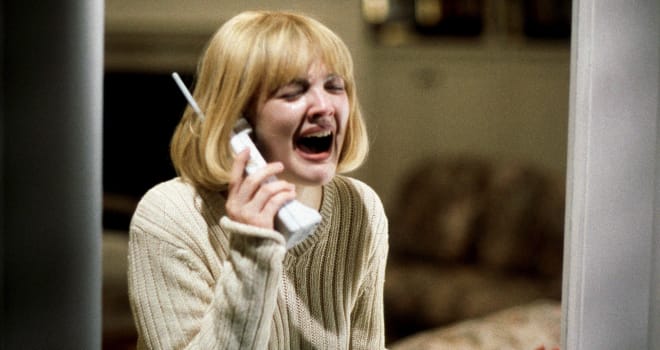 3. Horror master
3. Horror master 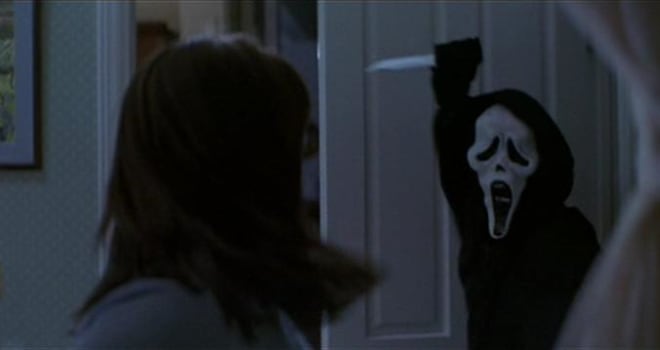 5. The menacing phone voice of Ghostface in all the movies belongs to Roger L. Jackson, who also voices the villainous chimp Mojo Jojo on "
5. The menacing phone voice of Ghostface in all the movies belongs to Roger L. Jackson, who also voices the villainous chimp Mojo Jojo on "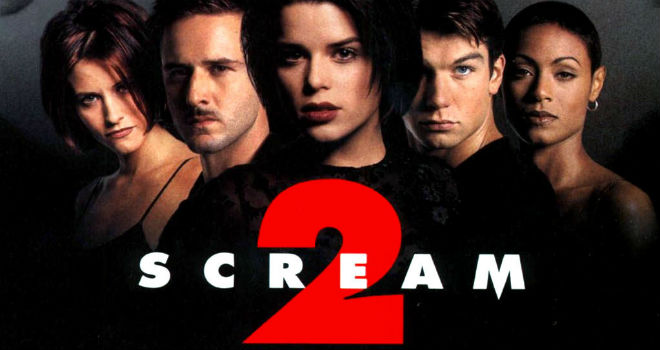 7. With the success of "Scream," the sequel was rushed into production, shooting in July 1997 for a release date that December. The haste led to a leak of the script, forcing Williamson to rewrite on set and change the identity of the killers.
7. With the success of "Scream," the sequel was rushed into production, shooting in July 1997 for a release date that December. The haste led to a leak of the script, forcing Williamson to rewrite on set and change the identity of the killers.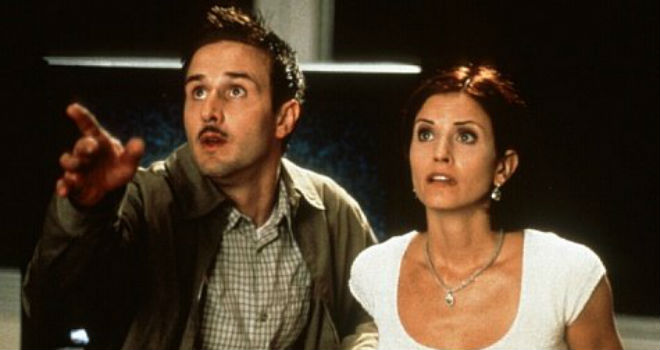 9. Cox and
9. Cox and 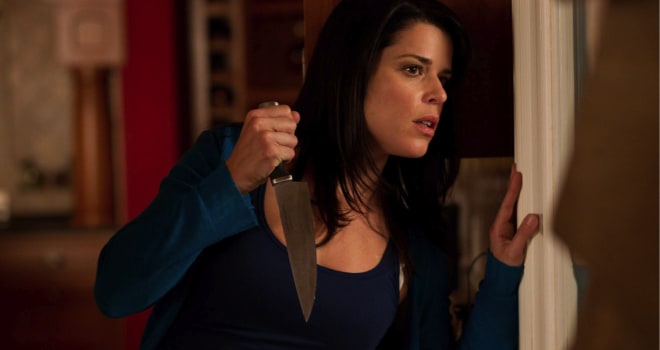 11. Williamson proposed a second trilogy in 2008, but only got as far as "Scream 4." (Blame that film's less-than-expected box office for why the fifth and sixth films never materialized.) Weinstein instead decided to launch the MTV series in June 2015. Craven's death in August 2015 probably puts the kibosh on any more "Scream" movies.
11. Williamson proposed a second trilogy in 2008, but only got as far as "Scream 4." (Blame that film's less-than-expected box office for why the fifth and sixth films never materialized.) Weinstein instead decided to launch the MTV series in June 2015. Craven's death in August 2015 probably puts the kibosh on any more "Scream" movies.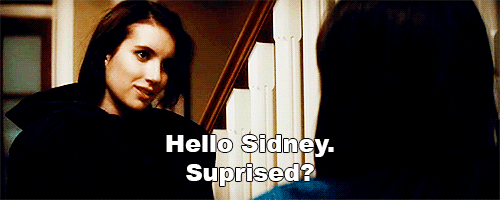 13. The "Scream 4" filmmakers initially offered
13. The "Scream 4" filmmakers initially offered 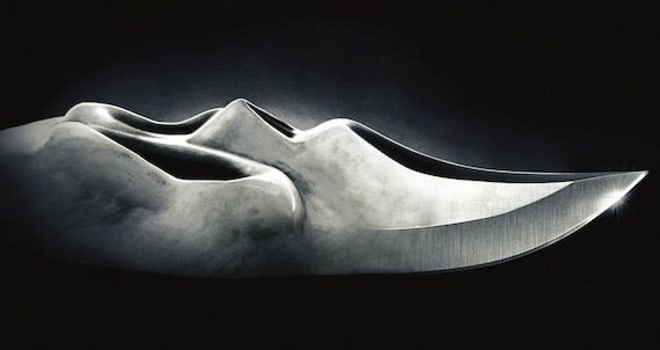 15. The Ghostface mask was designed by retailer Fun World in 1991, inspired (aptly) by Edvard Munch's famous painting "The Scream." It was also inspired by a figure from Gerald Scarfe's artwork from Pink Floyd's "The Wall" album and some ghost figures in an old Betty Boop cartoon.
15. The Ghostface mask was designed by retailer Fun World in 1991, inspired (aptly) by Edvard Munch's famous painting "The Scream." It was also inspired by a figure from Gerald Scarfe's artwork from Pink Floyd's "The Wall" album and some ghost figures in an old Betty Boop cartoon. Do you feel lucky? Well, do you, punk?
Do you feel lucky? Well, do you, punk?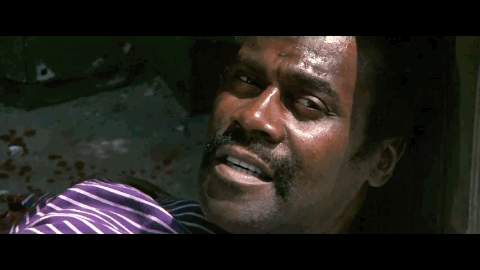 1. The original "Dirty Harry" script, written by
1. The original "Dirty Harry" script, written by 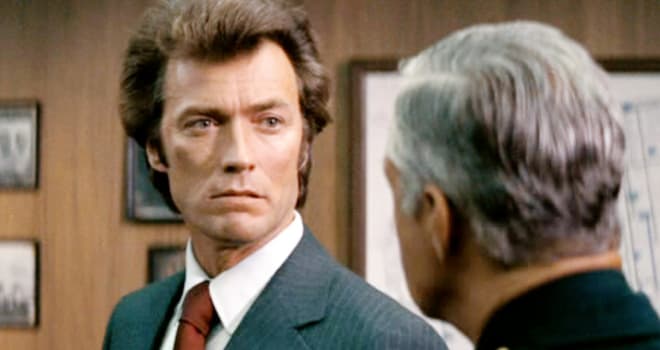 3.
3. 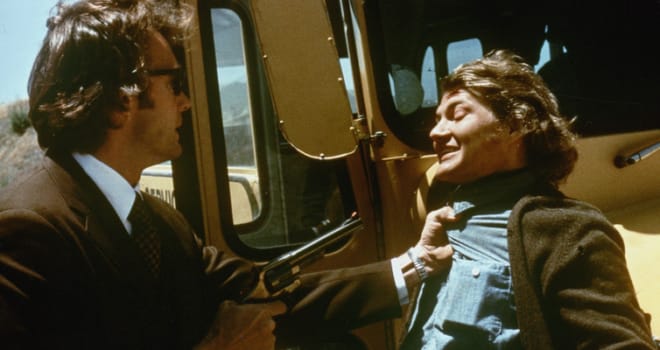 5. Eastwood's conditions for accepting the role: hire director
5. Eastwood's conditions for accepting the role: hire director 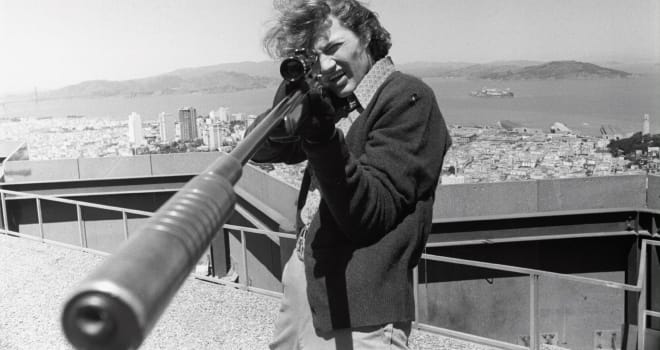 8. Eastwood and Siegel had seen
8. Eastwood and Siegel had seen 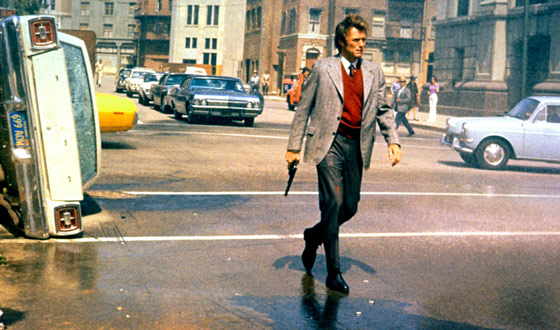 10. The 41-year-old Eastwood performed a number of his own stunts in the film. If you watch closely the scene where Harry jumps from a bridge onto the roof of a moving school bus, you'll see that it's really Eastwood and not a double.
10. The 41-year-old Eastwood performed a number of his own stunts in the film. If you watch closely the scene where Harry jumps from a bridge onto the roof of a moving school bus, you'll see that it's really Eastwood and not a double.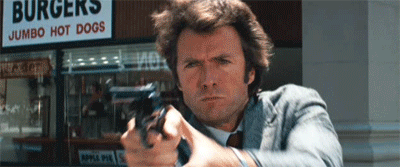 13. During the classic scene near the beginning when Harry catches the bank robbers, you can see a movie theater marquee advertising Eastwood's directing debut, "
13. During the classic scene near the beginning when Harry catches the bank robbers, you can see a movie theater marquee advertising Eastwood's directing debut, "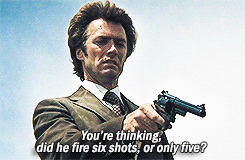 15. Robinson was so convincingly evil as Scorpio that he received death threats and had to get an unlisted phone number.
15. Robinson was so convincingly evil as Scorpio that he received death threats and had to get an unlisted phone number.